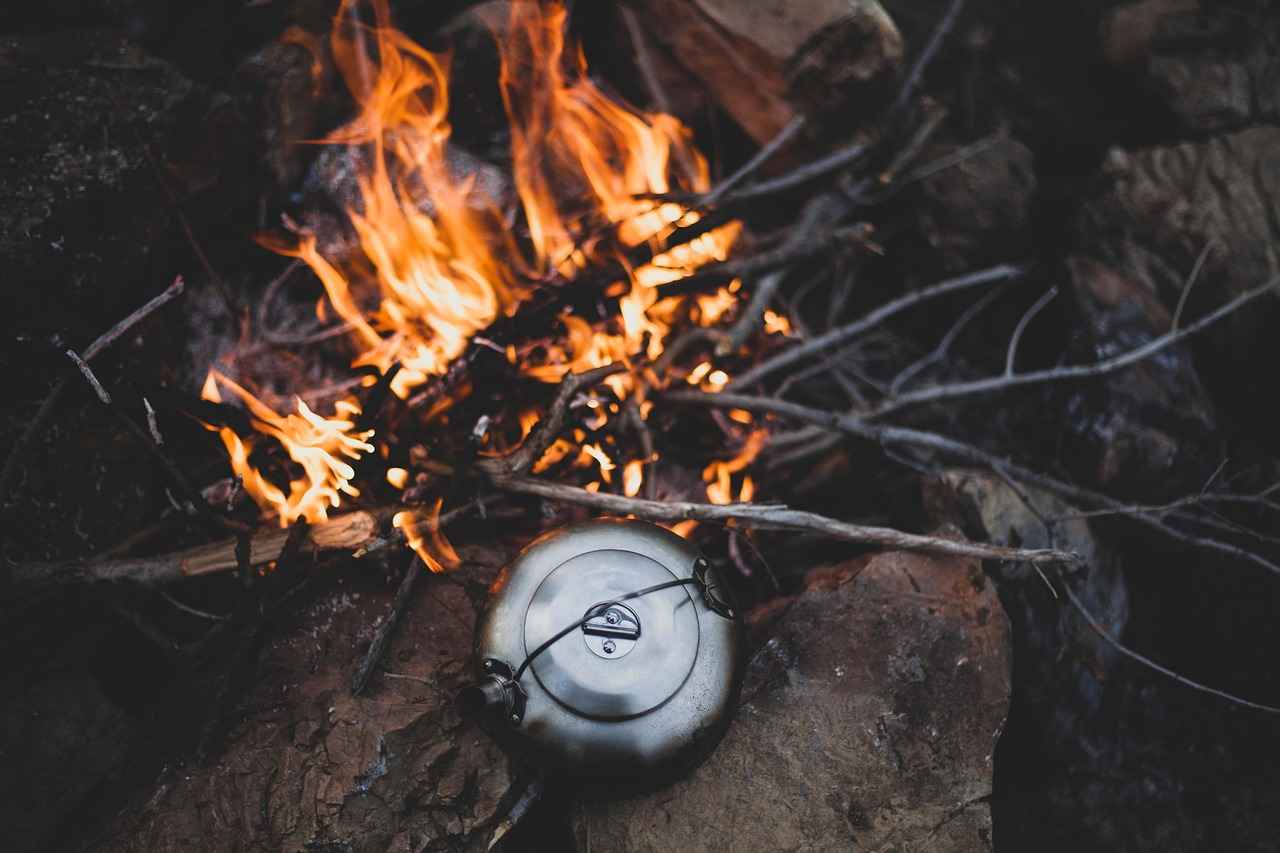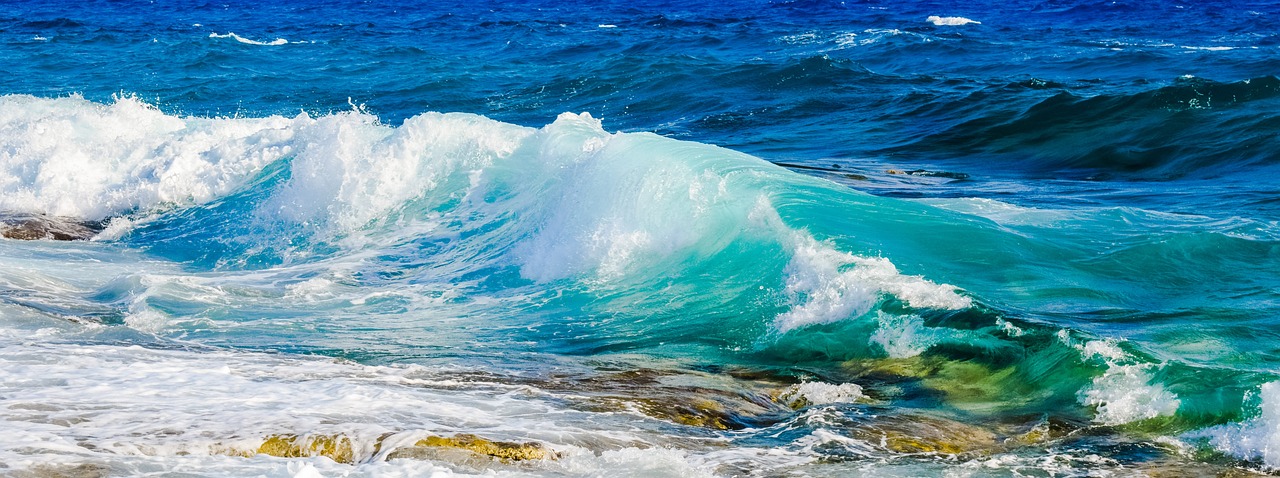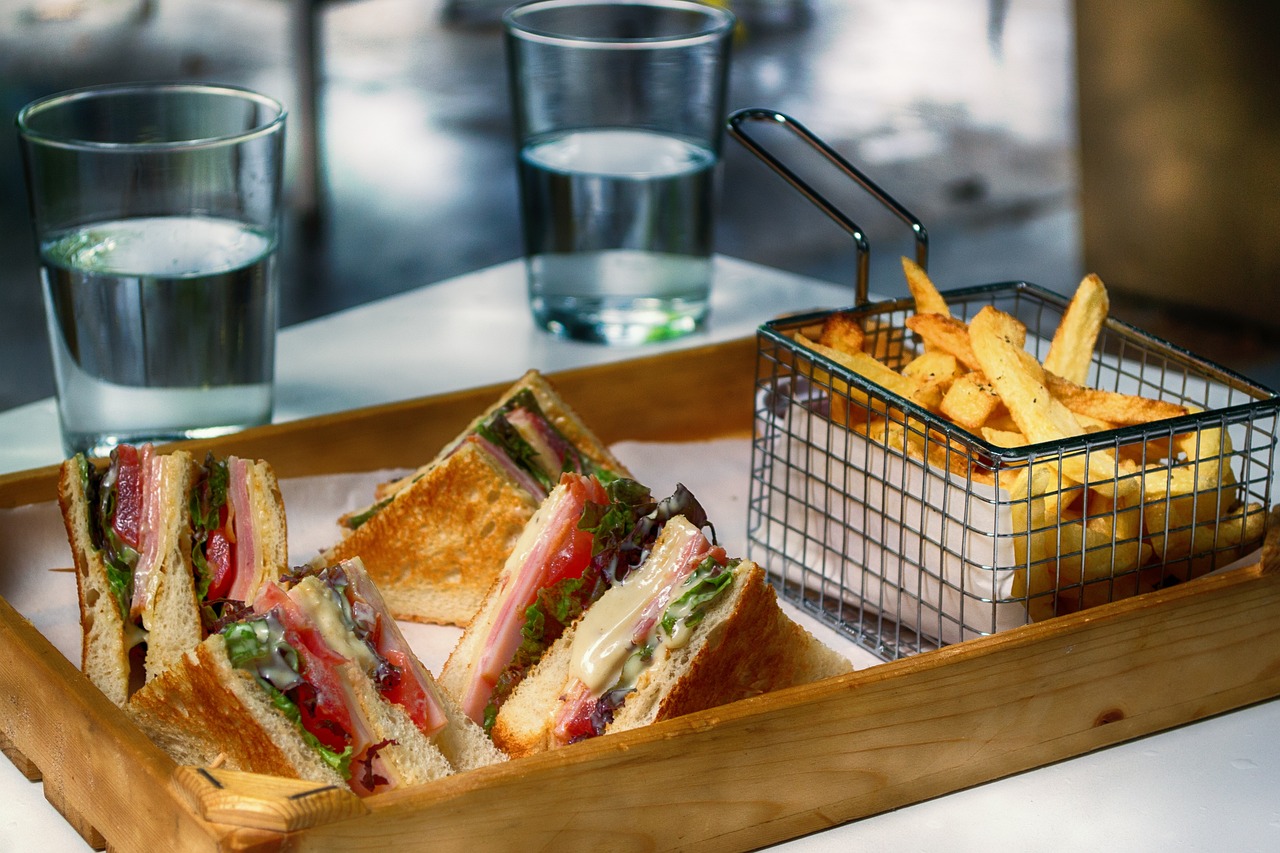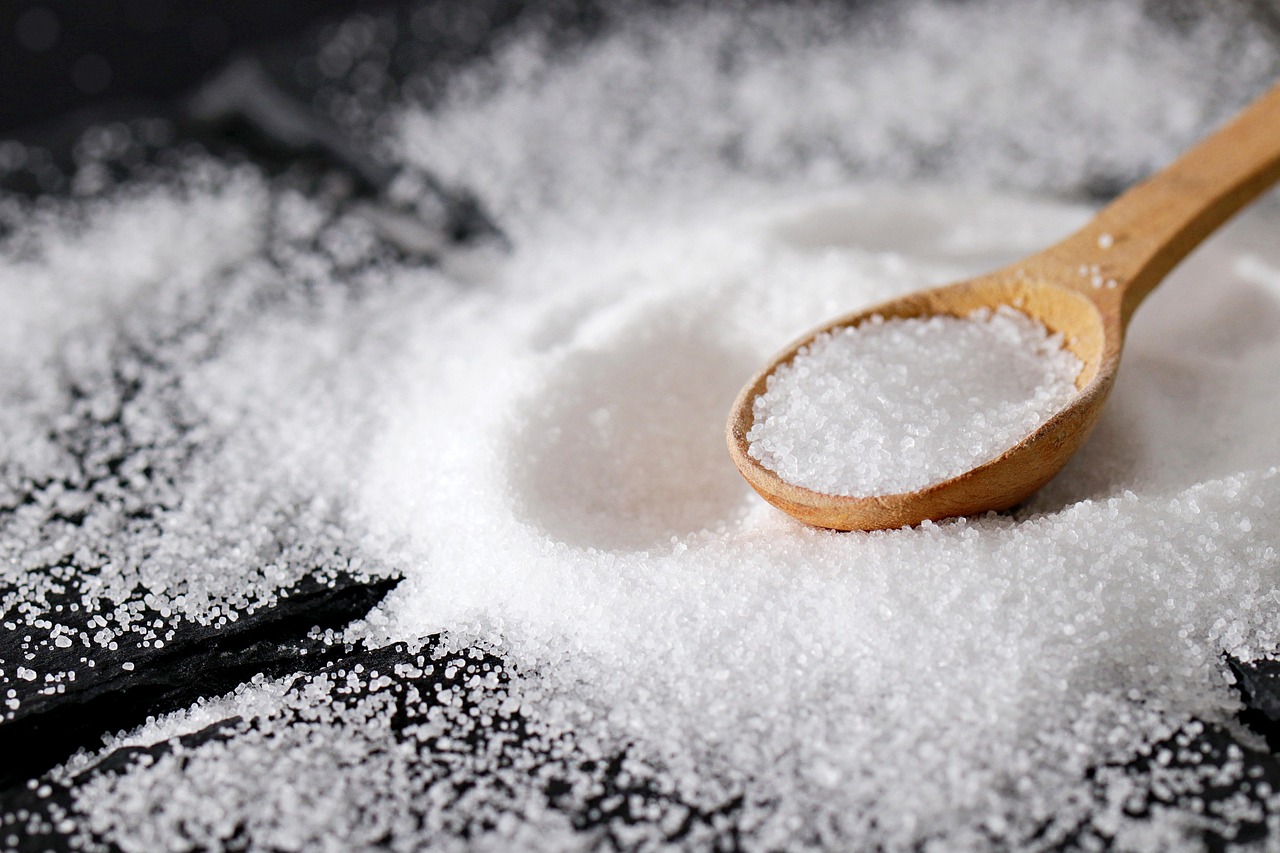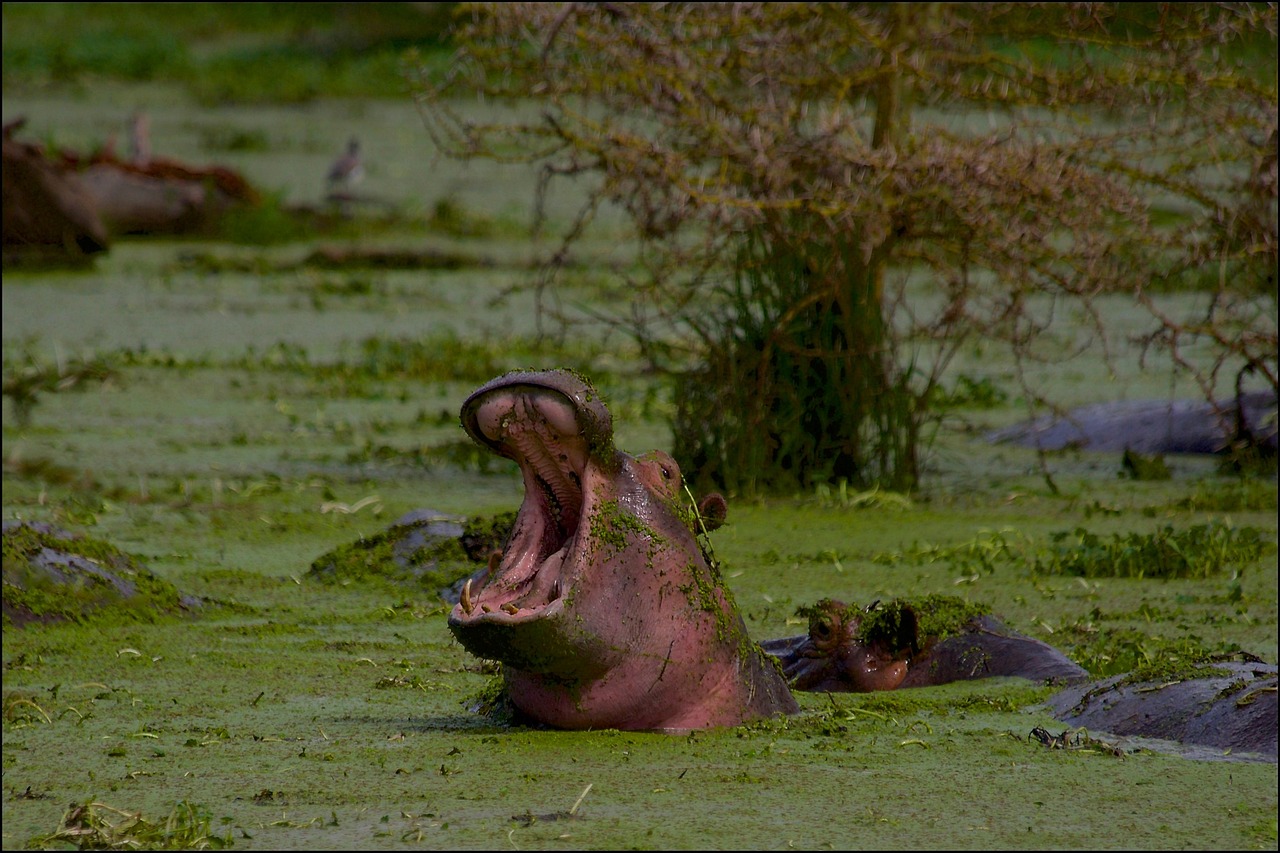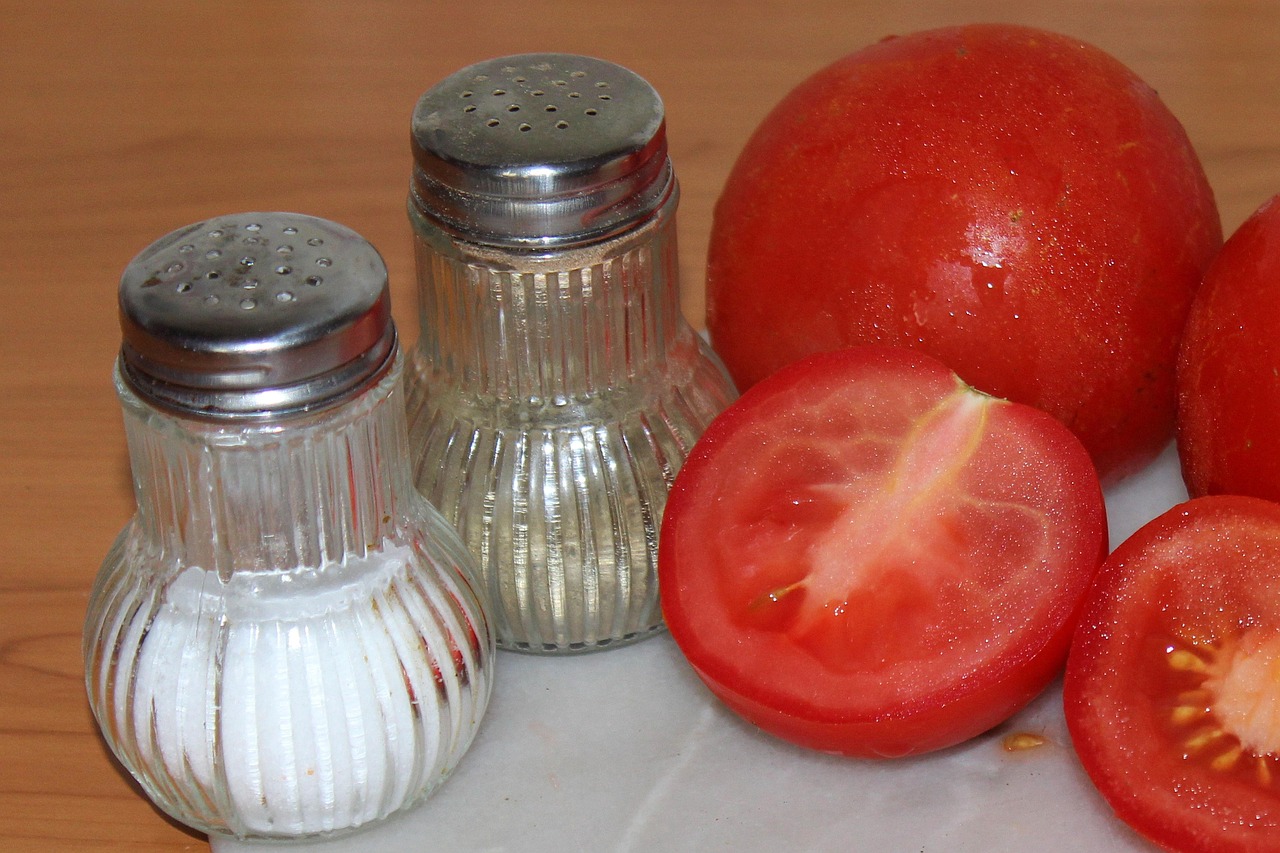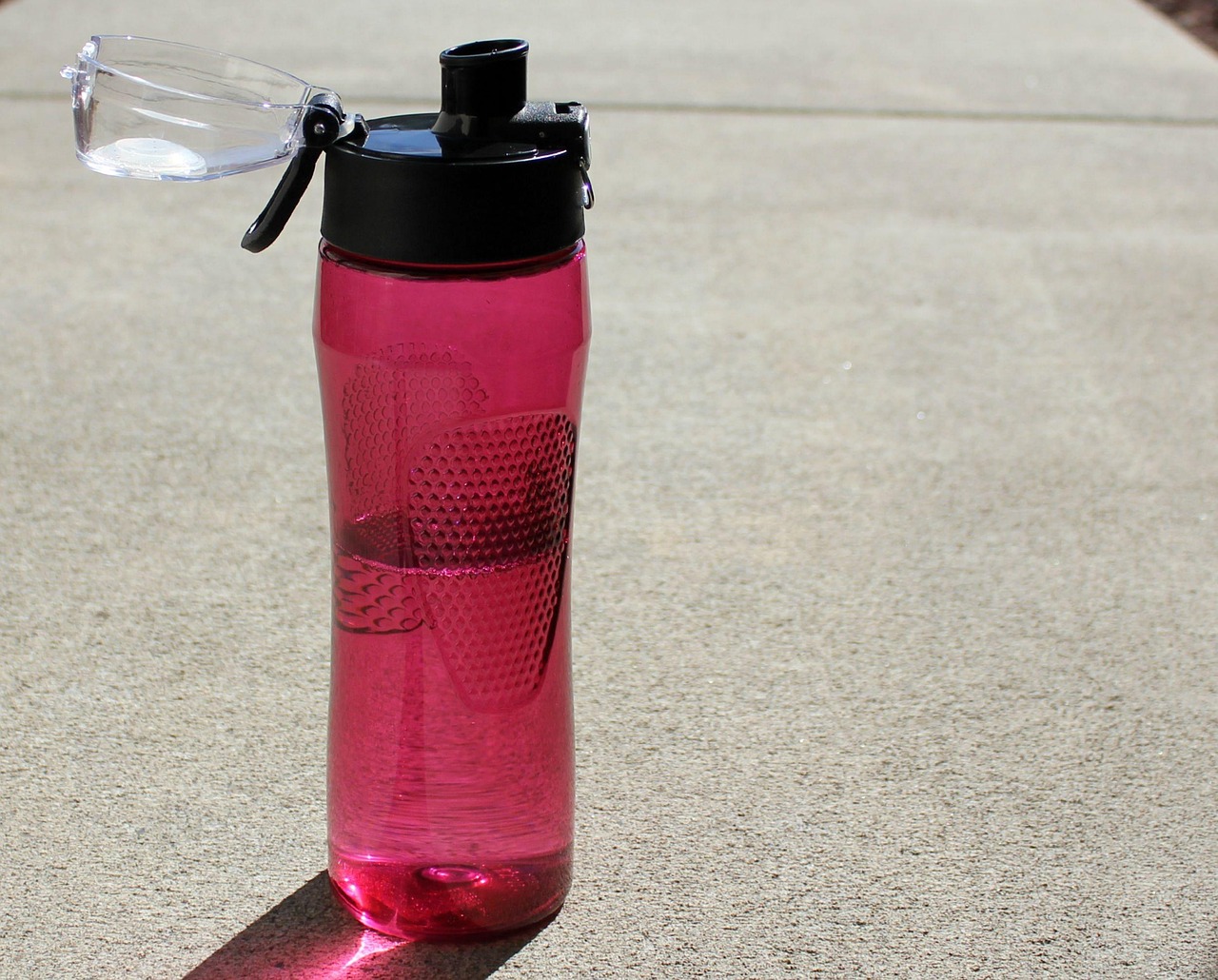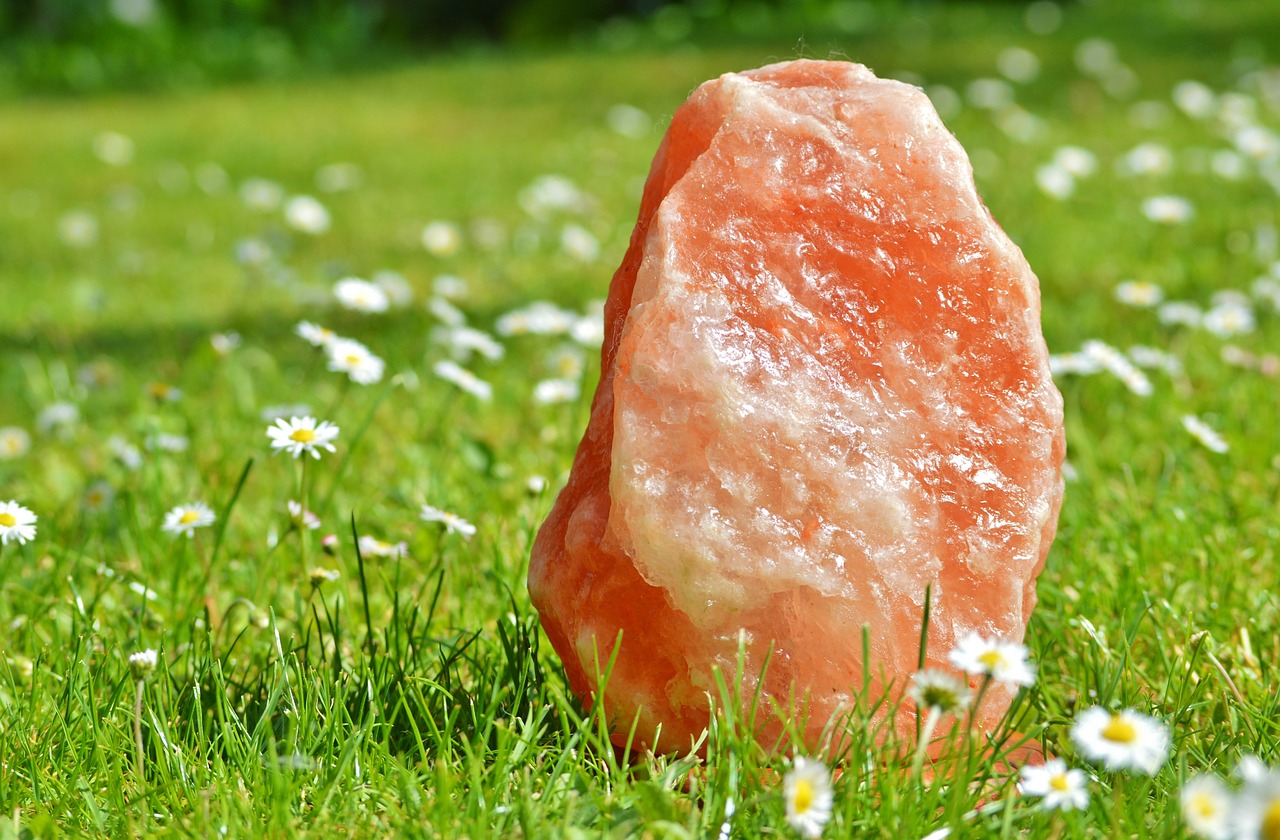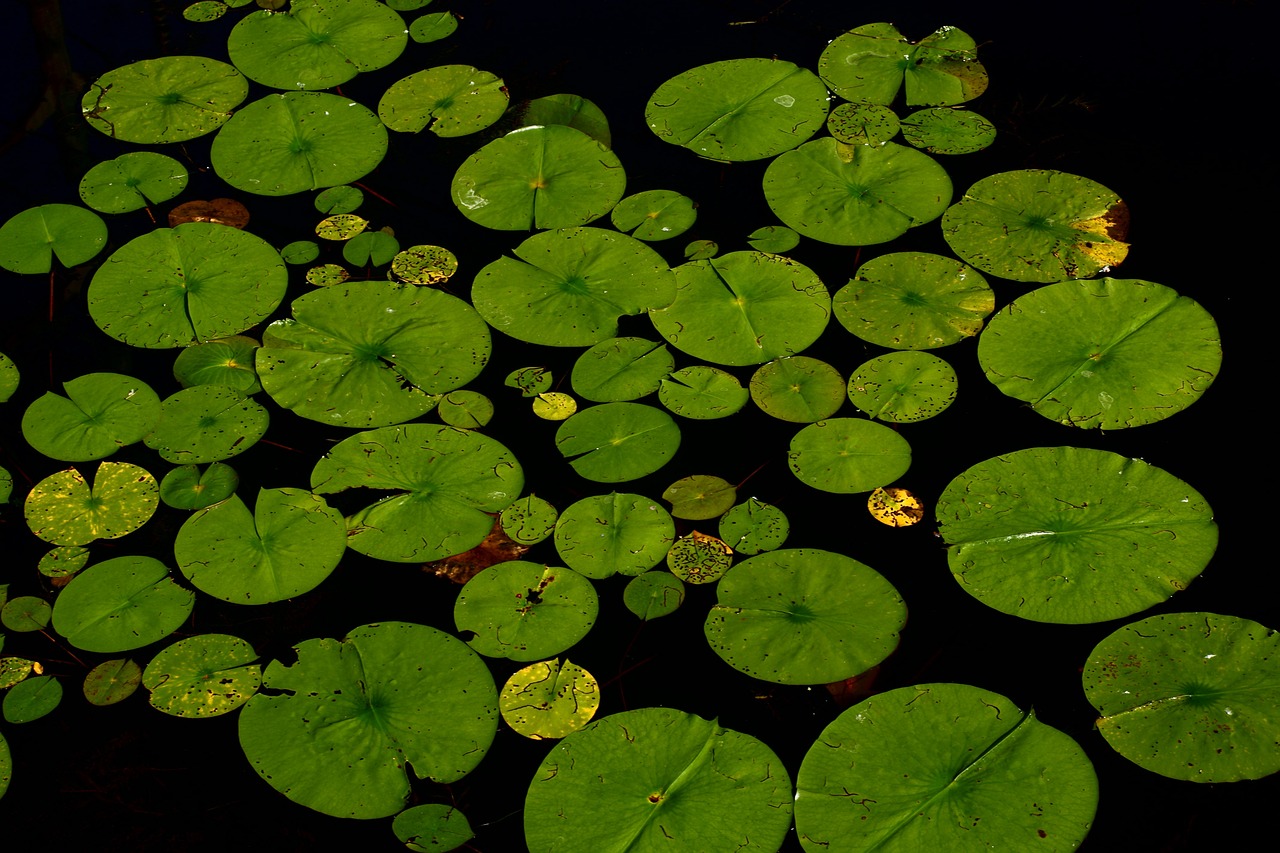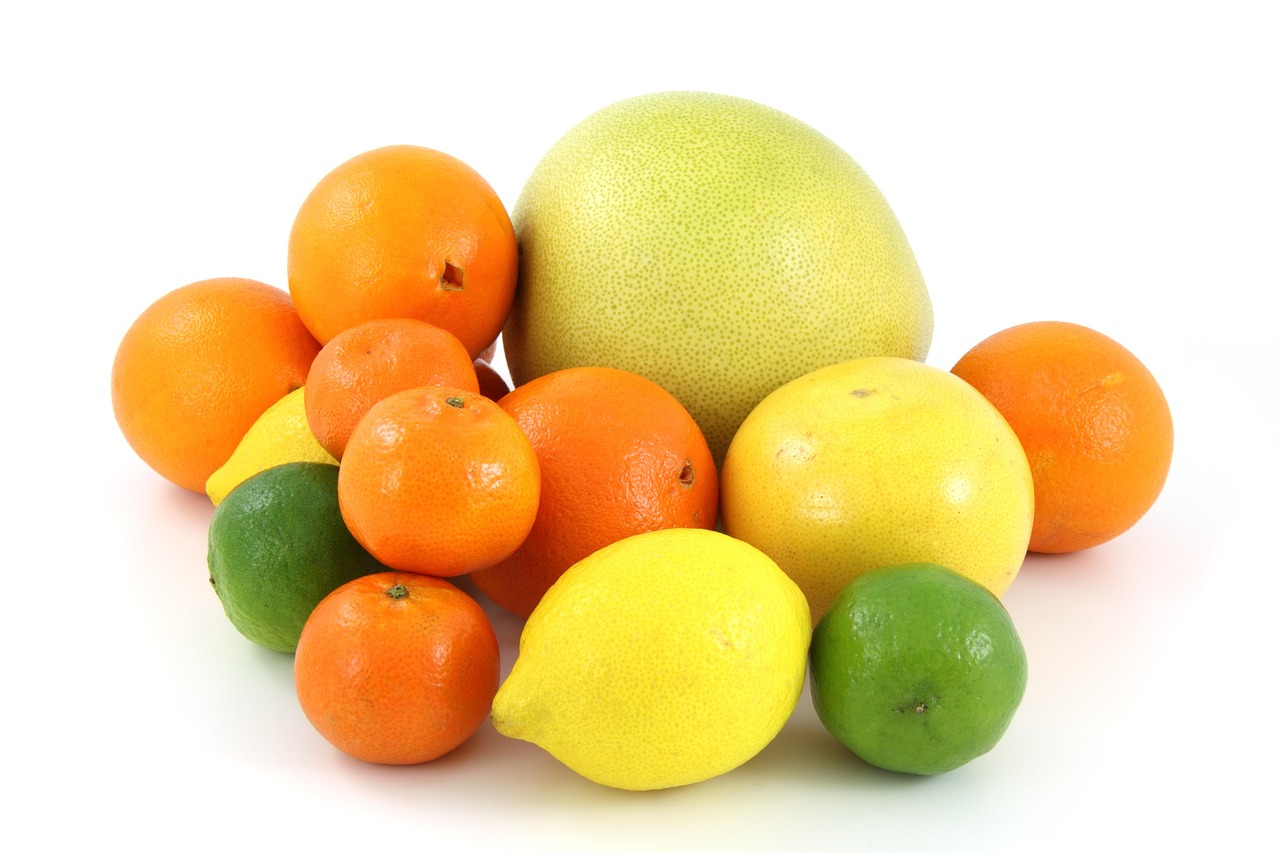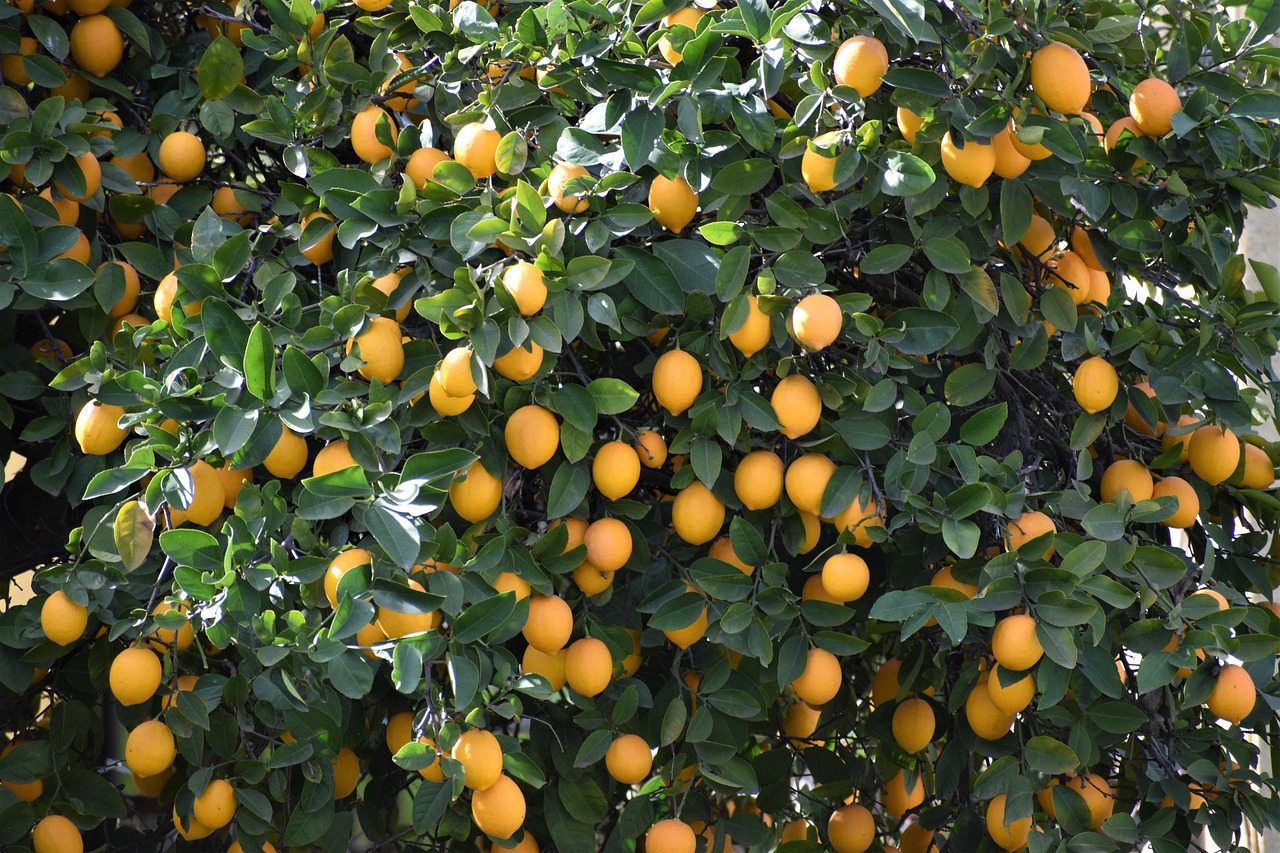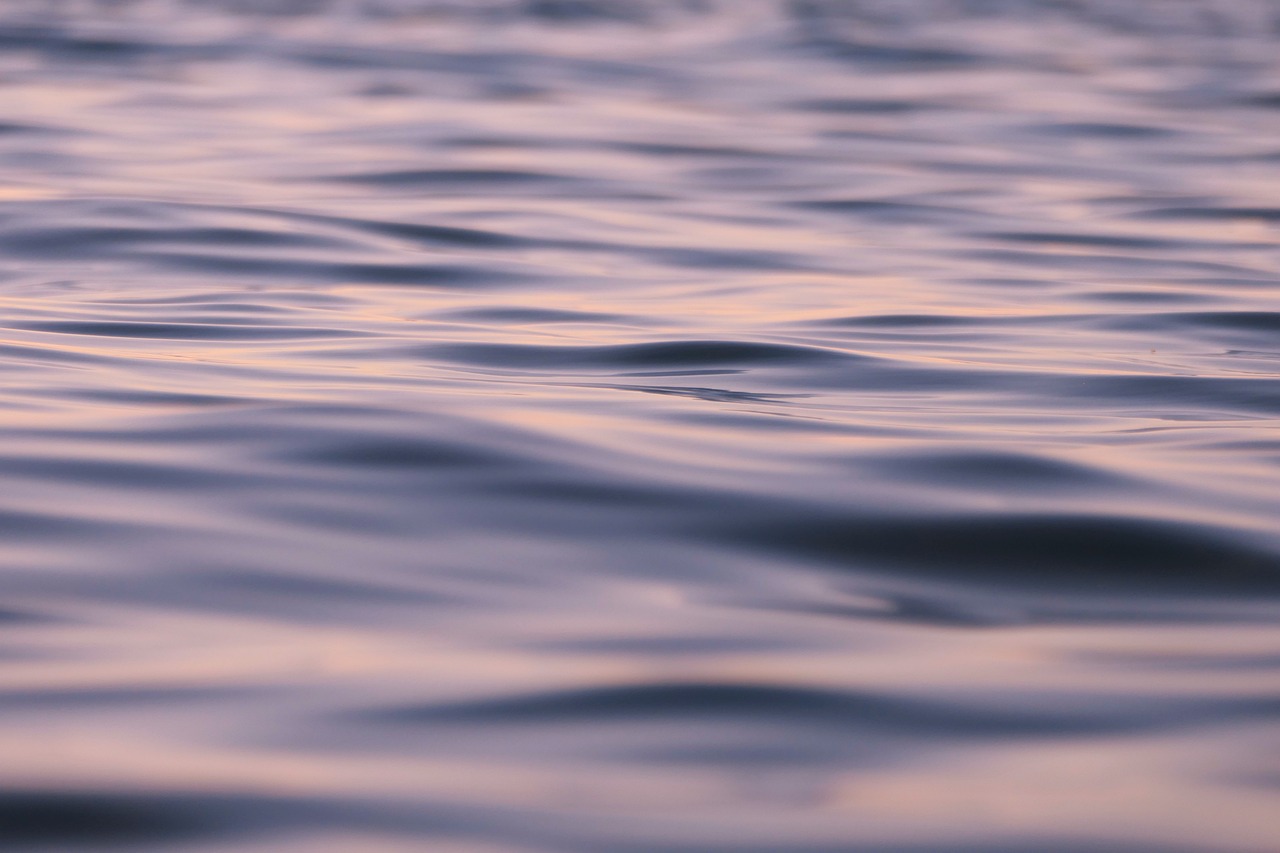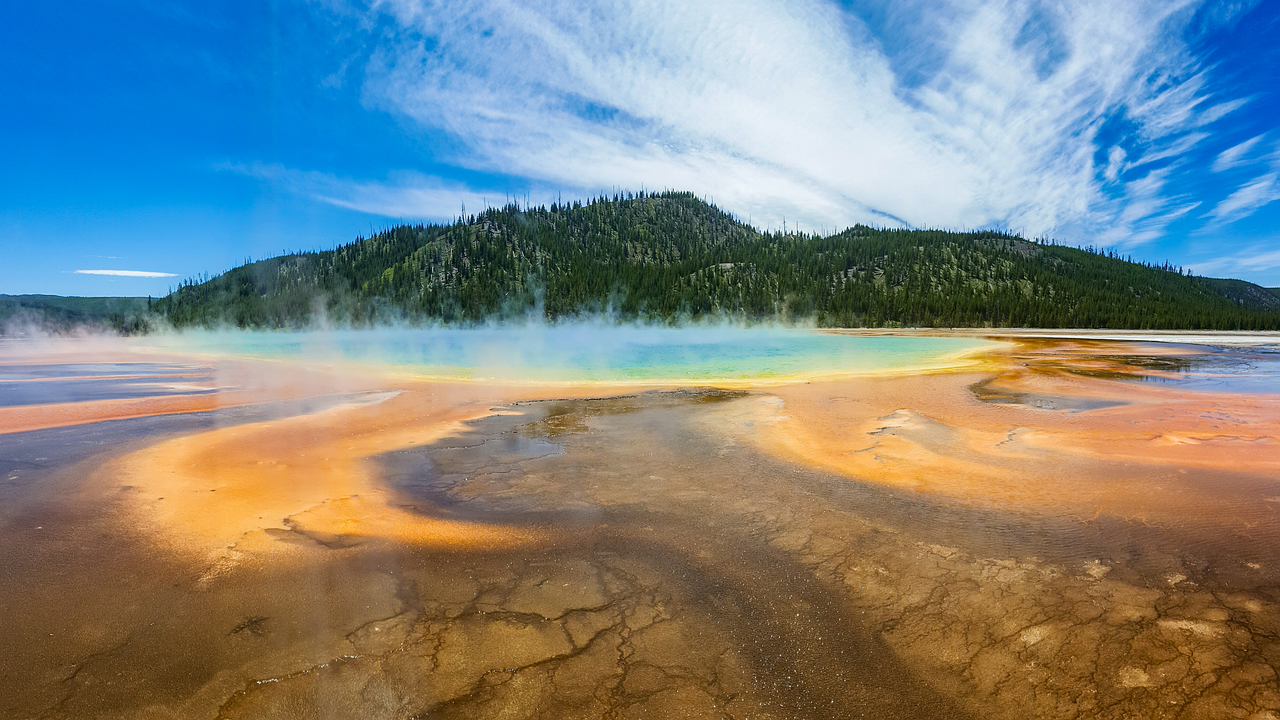The question of whether hot water boils faster than cold water has intrigued scientists and cooks alike for centuries. This article delves into the intricate scientific principles that govern boiling water, examines the famous Mpemba effect, and addresses common misconceptions surrounding this topic. By exploring various factors that influence boiling times, we aim to provide a comprehensive understanding of this age-old query.
The Science Behind Boiling Water
Boiling water is a process that occurs when water reaches its boiling point, which is typically 100°C (212°F) at sea level. The boiling point can be influenced by factors such as atmospheric pressure. When heat is applied to water, molecules begin to move faster, creating steam and bubbles. Understanding this process involves grasping how temperature and pressure interact during boiling.
The Mpemba Effect Explained
The Mpemba effect is a fascinating phenomenon where hot water can freeze faster than cold water under specific conditions. Named after Tanzanian student Erasto Mpemba, who observed this in 1963, this effect has sparked numerous studies and debates. Theories attempting to explain the Mpemba effect include evaporation, convection currents, and supercooling, all of which highlight the complex nature of thermal dynamics.
Factors Influencing Boiling Time
- Altitude and Its Impact on Boiling: At higher altitudes, the atmospheric pressure is lower, which reduces the boiling point of water. This means that water will boil at temperatures lower than 100°C, affecting cooking times and methods.
- Material of the Pot: The type of pot used can significantly influence how quickly water boils. For instance, copper pots conduct heat more efficiently than stainless steel, resulting in faster boiling times.
Common Misconceptions About Boiling Water
Many myths surround the boiling process, leading to confusion among cooks and consumers. One prevalent myth is that hot water always boils faster than cold water. While hot water starts at a higher temperature, the rate of heating can be affected by various factors, including pot material and heat source.
Another misconception is that cold water takes longer to boil than hot water in all situations. This is not always true, as specific conditions, such as the heat applied and the environment, can lead to exceptions. Understanding these nuances is crucial for effective cooking.
Practical Applications in Cooking
Knowing how boiling times work can significantly enhance cooking efficiency. For instance, when preparing pasta, starting with hot water might seem advantageous, but the choice of pot and heat source plays a more critical role. Here are some best practices:
- Use a pot with good heat conductivity, like copper or aluminum.
- Cover the pot to trap heat and reduce boiling time.
- Consider the quantity of water; a larger volume may take longer to reach boiling point.
Additionally, understanding boiling dynamics is essential for techniques such as blanching vegetables, where rapid boiling is required to maintain texture and color. By applying this knowledge, cooks can optimize their methods for better results.
In conclusion, the boiling of water is a complex interplay of temperature, pressure, and various external factors. While the debate over whether hot water boils faster than cold continues, it is clear that understanding the science behind boiling can lead to improved cooking practices and a deeper appreciation for this everyday phenomenon.
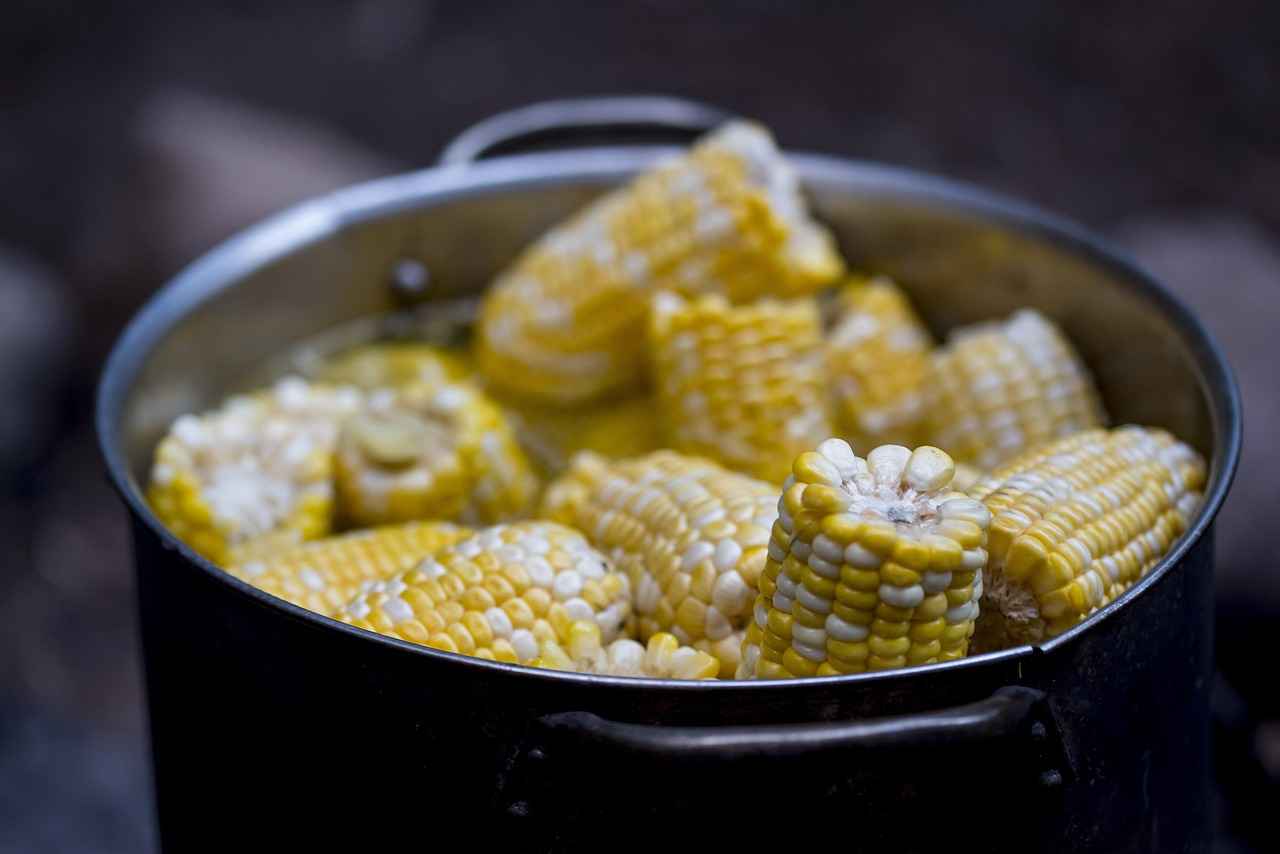
The Science Behind Boiling Water
The process of boiling water is a fascinating phenomenon that involves intricate interactions between temperature and pressure. Understanding these interactions is crucial for grasping the fundamental principles of boiling. When water is heated, its molecules gain energy, leading to increased movement and, ultimately, a transition from liquid to gas.
At its core, boiling occurs when the vapor pressure of the liquid equals the surrounding atmospheric pressure. This means that as the temperature rises, the kinetic energy of the water molecules increases, allowing them to overcome the intermolecular forces that keep them in liquid form. The boiling point of water is typically 100 degrees Celsius (212 degrees Fahrenheit) at sea level, but this point can change based on altitude and pressure.
| Factor | Effect on Boiling Point |
|---|---|
| Altitude | Lower boiling point due to decreased atmospheric pressure |
| Impurities | Higher boiling point with dissolved substances (boiling point elevation) |
| Container Material | Affects heat conduction and efficiency of boiling |
Heat energy plays a pivotal role in this process. When heat is applied to water, it is absorbed, causing the temperature to rise. As the temperature approaches the boiling point, bubbles of vapor begin to form within the liquid. These bubbles grow larger and rise to the surface, resulting in the characteristic bubbling seen during boiling.
- Convection Currents: The movement of water due to temperature differences can enhance the boiling process, as hotter water rises and cooler water sinks.
- Evaporation: Some molecules at the surface escape into the air, which can slightly lower the temperature of the remaining water, making it essential to cover pots to maintain heat.
- Superheating: In certain conditions, water can be heated beyond its boiling point without actually boiling, which can lead to explosive boiling when disturbed.
Understanding these principles not only clarifies the science behind boiling but also helps in practical applications, such as cooking. For instance, knowing that water boils at a lower temperature at higher altitudes can inform adjustments in cooking times and methods. Additionally, the choice of pot material can impact how quickly water reaches its boiling point, with materials like copper providing better heat conduction compared to others.
In summary, the science behind boiling water is a complex interplay of temperature, pressure, and heat energy. By grasping these concepts, individuals can enhance their cooking techniques and better understand this essential culinary process.
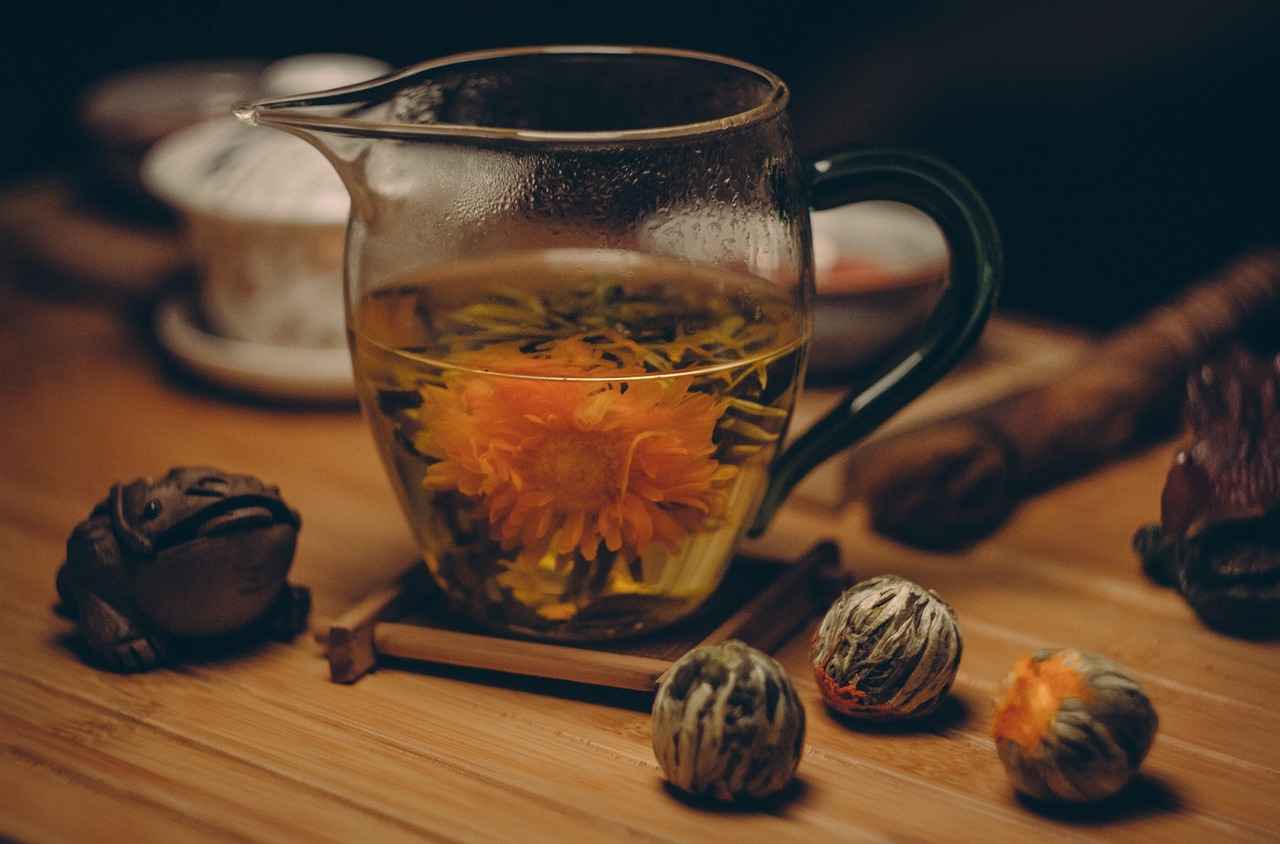
The Mpemba Effect Explained
The Mpemba effect is a fascinating and somewhat counterintuitive phenomenon that suggests hot water can freeze faster than cold water under specific conditions. This concept has intrigued scientists and laypeople alike for centuries, sparking numerous studies and debates about its underlying mechanisms. In this section, we will delve into the history of the Mpemba effect, explore scientific theories that attempt to explain it, and examine its implications in the realms of physics and everyday life.
The term “Mpemba effect” was named after a Tanzanian student named Erasto Mpemba, who in 1963 observed that hot ice cream mix froze faster than a cold one. This observation led him to question traditional understandings of heat transfer and freezing processes. However, the roots of this effect can be traced back even further, with references appearing in the works of Aristotle and later, in the writings of scientists like Francis Bacon. Despite its long history, the Mpemba effect remained largely unexplained until the late 20th century, when researchers began to investigate the conditions under which this phenomenon occurs.
| Key Theories Explaining the Mpemba Effect | Description |
|---|---|
| Evaporation | Hot water may lose mass through evaporation, reducing the total amount of water that needs to freeze. |
| Convection Currents | Hot water can create convection currents that promote uniform cooling, potentially leading to faster freezing. |
| Supercooling | Cold water may supercool below its freezing point without forming ice, while hot water may freeze more readily. |
Research into the Mpemba effect has yielded various hypotheses, each attempting to elucidate why hot water can sometimes freeze faster than cold. One prominent theory is related to evaporation. When hot water is placed in a freezing environment, it may evaporate more quickly than cold water, resulting in a smaller volume that needs to freeze. This reduction in mass can lead to a faster freezing time.
Another theory revolves around convection currents. In hot water, the temperature difference creates currents that help distribute heat more evenly. This phenomenon can enhance the cooling process, allowing the water to reach freezing temperatures more rapidly. Additionally, the concept of supercooling plays a crucial role; cold water can sometimes remain in a liquid state below its freezing point, which can delay the freezing process compared to hot water that may freeze more readily.
Despite the various theories, the Mpemba effect remains a topic of active research. Scientists continue to explore the specific conditions—such as container shape, water purity, and environmental factors—that influence the effect. The Mpemba effect challenges our conventional understanding of thermodynamics and encourages further exploration into the intricate behaviors of water.
In practical terms, understanding the Mpemba effect can have implications beyond mere curiosity. It invites cooks and scientists alike to reconsider how they approach the freezing process, whether in culinary applications or in scientific experiments. As we continue to uncover the mysteries surrounding this intriguing phenomenon, the Mpemba effect serves as a reminder of the complexities and surprises inherent in the natural world.
Historical Context of the Mpemba Effect
The Mpemba effect is a fascinating phenomenon that has puzzled scientists and laypeople alike for centuries. It posits that, under certain conditions, hot water can freeze faster than cold water. This counterintuitive assertion has sparked numerous investigations, leading to a deeper understanding of the underlying physics and chemistry. In this section, we will explore the historical context of the Mpemba effect, highlighting key experiments and the scientists who contributed to its discovery.
The origins of the Mpemba effect can be traced back to the Tanzanian student Erasto Mpemba, who, in 1963, noticed that hot ice cream mix froze faster than cold mix while making ice cream in his school. His observations led him to question the conventional wisdom of thermodynamics, prompting him to discuss his findings with his physics teacher, Dr. Franz D. M. S. K. J. S. G. J. L. J. L. K. K. M. P. M. K. M. P. M. K. M. P. M. K. M. P. M. K. M. P. M. K. M. P. M. K. M. P. M. K. M. P. M. K. M. P. M. K. M. P. M. K. M. P. M. K. M. P. M. K. M. P. M. K. M. P. M. K. M. P. M. K. M. P. M. K. M. P. M. K. M. P. M. K. M. P. M. K. M. P. M. K. M. P. M. K. M. P. M. K. M. P. M. K. M. P. M. K. M. P. M. K. M. P. M. K. M. P. M. K. M. P. M. K. M. P. M. K. M. P. M. K. M. P. M. K. M. P. M. K. M. P. M. K. M. P. M. K. M. P. M. K. M. P. M. K. M. P. M. K. M. P. M. K. M. P. M. K. M. P. M. K. M. P. M. K. M. P. M. K. M. P. M. K. M. P. M. K. M. P. M. K. M. P. M. K. M. P. M. K. M. P. M. K. M. P. M. K. M. P. M. K. M. P. M. K. M. P. M. K. M. P. M. K. M. P. M. K. M. P. M. K. M. P. M. K. M. P. M. K. M. P. M. K. M. P. M. K. M. P. M. K. M. P. M. K. M. P. M. K. M. P. M. K. M. P. M. K. M. P. M. K. M. P. M. K. M. P. M. K. M. P. M. K. M. P. M. K. M. P. M. K. M. P. M. K. M. P. M. K. M. P. M. K. M. P. M. K. M. P. M. K. M. P. M. K. M. P. M. K. M. P. M. K. M. P. M. K. M. P. M. K. M. P. M. K. M. P. M. K. M. P. M. K. M. P. M. K. M. P. M. K. M. P. M. K. M. P. M. K. M. P. M. K. M. P. M. K. M. P. M. K. M. P. M. K. M. P. M. K. M. P. M. K. M. P. M. K. M. P. M. K. M. P. M. K. M. P. M. K. M. P. M. K. M. P. M. K. M. P. M. K. M. P. M. K. M. P. M. K. M. P. M. K. M. P. M. K. M. P. M. K. M. P. M. K. M. P. M. K. M. P. M. K. M. P. M. K. M. P. M. K. M. P. M. K. M. P. M. K. M. P. M. K. M. P. M. K. M. P. M. K. M. P. M. K. M. P. M. K. M. P. M. K. M. P. M. K. M. P. M. K. M. P. M. K. M. P. M. K. M. P. M. K. M. P. M. K. M. P. M. K. M. P. M. K. M. P. M. K. M. P. M. K. M. P. M. K. M. P. M. K. M. P. M. K. M. P. M. K. M. P. M. K. M. P. M. K. M. P. M. K. M. P. M. K. M. P. M. K. M. P. M. K. M. P. M. K. M. P. M. K. M. P. M. K. M. P. M. K. M. P. M. K. M. P. M. K. M. P. M. K. M. P. M. K. M. P. M. K. M. P. M. K. M. P. M. K. M. P. M. K. M. P. M. K. M. P. M. K. M. P. M. K. M. P. M. K. M. P. M. K. M. P. M. K. M. P. M. K. M. P. M. K. M. P. M. K. M. P. M. K. M. P. M. K. M. P. M. K. M. P. M. K. M. P. M. K. M. P. M. K. M. P. M. K. M. P. M. K. M. P. M. K. M. P. M. K. M. P. M. K. M. P. M. K. M. P. M. K. M. P. M. K. M. P. M. K. M. P. M. K. M. P. M. K. M. P. M. K. M. P. M. K. M. P. M. K. M. P. M. K. M. P. M. K. M. P. M. K. M. P. M. K. M. P. M. K. M. P. M. K. M. P. M. K. M. P. M. K. M. P. M. K. M. P. M. K. M. P. M. K. M. P. M. K. M. P. M. K. M. P. M. K. M. P. M. K. M. P. M. K. M. P. M. K. M. P. M. K. M. P. M. K. M. P. M. K. M. P. M. K. M. P. M. K. M. P. M. K. M. P. M. K. M. P. M. K. M. P. M. K. M. P. M. K. M. P. M. K. M. P. M. K. M. P. M. K. M. P. M. K. M. P. M. K. M. P. M. K. M. P. M. K. M. P. M. K. M. P. M. K. M. P. M. K. M. P. M. K. M. P. M. K. M. P. M. K. M. P. M. K. M. P. M. K. M. P. M. K. M. P. M. K. M. P. M. K. M. P. M. K. M. P. M. K. M. P. M. K. M. P. M. K. M. P. M. K. M. P. M. K. M. P. M. K. M. P. M. K. M. P. M. K. M. P. M. K. M. P. M. K. M. P. M. K. M. P. M. K. M. P. M. K. M. P. M. K. M. P. M. K. M. P. M. K. M. P. M. K. M. P. M. K. M. P. M. K. M. P. M. K. M. P. M. K. M. P. M. K. M. P. M. K. M. P. M. K. M. P. M. K. M. P. M. K. M. P. M. K. M. P. M. K. M. P. M. K. M. P. M. K. M. P. M. K. M. P. M. K. M. P. M. K. M. P. M. K. M. P. M. K. M. P. M. K. M. P. M. K. M. P. M. K. M. P. M. K. M. P. M. K. M. P. M. K. M. P. M. K. M. P. M. K. M. P. M. K. M. P. M. K. M. P. M. K. M. P. M. K. M. P. M. K. M. P. M. K. M. P. M. K. M. P. M. K. M. P. M. K. M. P. M. K. M. P. M. K. M. P. M. K. M. P. M. K. M. P. M. K. M. P. M. K. M. P. M. K. M. P. M. K. M. P. M. K. M. P. M. K. M. P. M. K. M. P. M. K. M. P. M. K. M. P. M. K. M. P. M. K. M. P. M. K. M. P. M. K. M. P. M. K. M. P. M. K. M. P. M. K. M. P. M. K. M. P. M. K. M. P. M. K. M. P. M. K. M. P. M. K. M. P. M. K. M. P. M. K. M. P. M. K. M. P. M. K. M. P. M. K. M. P. M. K. M. P. M. K. M. P. M. K. M. P. M. K. M. P. M. K. M. P. M. K. M. P. M. K. M. P. M. K. M. P. M. K. M. P. M. K. M. P. M. K. M. P. M. K. M. P. M. K. M. P. M. K. M. P. M. K. M. P. M. K. M. P. M. K. M. P. M. K. M. P. M. K. M. P. M. K. M. P. M. K. M. P. M. K. M. P. M. K. M. P. M. K. M. P. M. K. M. P. M. K. M. P. M. K. M. P. M. K. M. P. M. K. M. P. M. K. M. P. M. K. M. P. M. K. M. P. M. K. M. P. M. K. M. P. M. K. M. P. M. K. M. P. M. K. M. P. M. K. M. P. M. K. M. P. M. K. M. P. M. K. M. P. M. K. M. P. M. K. M. P. M. K. M. P. M. K. M. P. M. K. M. P. M. K. M. P. M. K. M. P. M. K. M. P. M. K. M. P. M. K. M. P. M. K. M. P. M. K. M. P. M. K. M. P. M. K. M. P. M. K. M. P. M. K. M. P. M. K. M. P. M. K. M. P. M. K. M. P. M. K. M. P. M. K. M. P. M. K. M. P. M. K. M. P. M. K. M. P. M. K. M. P. M. K. M. P. M. K. M. P. M. K. M. P. M. K. M. P. M. K. M. P. M. K. M. P. M. K. M. P. M. K. M. P. M. K. M. P. M. K. M. P. M. K. M. P. M. K. M. P. M. K. M. P. M. K. M. P. M. K. M. P. M. K. M. P. M. K. M. P. M. K. M. P. M. K. M. P. M. K. M. P. M. K. M. P. M. K. M. P. M. K. M. P. M. K. M. P. M. K. M. P. M. K. M. P. M. K. M. P. M. K. M. P. M. K. M. P. M. K. M. P. M. K. M. P. M. K. M. P. M. K. M. P. M. K. M. P. M. K. M. P. M. K. M. P. M. K. M. P. M. K. M. P. M. K. M. P. M. K. M. P. M. K. M. P. M. K. M. P. M. K. M. P. M. K. M. P. M. K. M. P. M. K. M. P. M. K. M. P. M. K. M. P. M. K. M. P. M. K. M. P. M. K. M. P. M. K. M. P. M. K. M. P. M. K. M. P. M. K. M. P. M. K. M. P. M. K. M. P. M. K. M. P. M. K. M. P. M. K. M. P. M. K. M. P. M. K. M. P. M. K. M. P. M. K. M. P. M. K. M. P. M. K. M. P. M. K. M. P. M. K. M. P. M. K. M. P. M. K. M. P. M. K. M. P. M. K. M. P. M. K. M. P. M. K. M. P. M. K. M. P. M. K. M. P. M. K. M. P. M. K. M. P. M. K. M. P. M. K. M. P. M. K. M. P. M. K. M. P. M. K. M. P. M. K. M. P. M. K. M. P. M. K. M. P. M. K. M. P. M. K. M. P. M. K. M. P. M. K. M. P. M. K. M. P. M. K. M. P. M. K. M. P. M. K. M. P. M. K. M. P. M. K. M. P. M. K. M. P. M. K. M. P. M. K. M. P. M. K. M. P. M. K. M. P. M. K. M. P. M. K. M. P. M. K. M. P. M. K. M. P. M. K. M. P. M. K. M. P. M. K. M. P. M. K. M. P. M. K. M. P. M. K. M. P. M. K. M. P. M. K. M. P. M. K. M. P. M. K. M. P. M. K. M. P. M. K. M. P. M. K. M. P. M. K. M. P. M. K. M. P. M. K. M. P. M. K. M. P. M. K. M. P. M. K. M. P. M. K. M. P. M. K. M. P. M. K. M. P. M. K. M. P. M. K. M. P. M. K. M. P. M. K. M. P. M. K. M. P. M. K. M. P. M. K. M. P. M. K. M. P. M. K. M. P. M. K. M. P. M. K. M. P. M. K. M. P. M. K. M. P. M. K. M. P. M. K. M. P. M. K. M. P. M. K. M. P. M. K. M. P. M. K. M. P. M. K. M. P. M. K. M. P. M. K. M. P. M. K. M. P. M. K. M. P. M. K. M. P. M. K. M. P. M. K. M. P. M. K. M. P. M. K. M. P. M. K. M. P. M. K. M. P. M. K. M. P. M. K. M. P. M. K. M. P. M. K. M. P. M. K. M. P. M. K. M. P. M. K. M. P. M. K. M. P. M. K. M. P. M. K. M. P. M. K. M. P. M. K. M. P. M. K. M. P. M. K. M. P. M. K. M. P. M. K. M. P. M. K. M. P. M. K. M. P. M. K. M. P. M. K. M. P. M. K. M. P. M. K. M. P. M. K. M. P. M. K. M. P. M. K. M. P. M. K. M. P. M. K. M. P. M. K. M. P. M. K. M. P. M. K. M. P. M. K. M. P. M. K. M. P. M. K. M. P. M. K. M. P. M. K. M. P. M. K. M. P. M. K. M. P. M. K. M. P. M. K. M. P. M. K. M. P. M. K. M. P. M. K. M. P. M. K. M. P. M. K. M. P. M. K. M. P. M. K. M. P. M. K. M. P. M. K. M. P. M. K. M. P. M. K. M. P. M. K. M. P. M. K. M. P. M. K. M. P. M. K. M. P. M. K. M. P. M. K. M. P. M. K. M. P. M. K. M. P. M. K. M. P. M. K. M. P. M. K. M. P. M. K. M. P. M. K. M. P. M. K. M. P. M. K. M. P. M. K. M. P. M. K. M. P. M. K. M. P. M. K. M. P. M. K. M. P. M. K. M. P. M. K. M. P. M. K. M. P. M. K. M. P. M. K. M. P. M. K. M. P. M. K. M. P. M. K. M. P. M. K. M. P. M. K. M. P. M. K. M. P. M. K. M. P. M. K. M. P. M. K. M. P. M. K. M. P. M. K. M. P. M. K. M. P. M. K. M. P. M. K. M. P. M. K. M. P. M. K. M. P. M. K. M. P. M. K. M. P. M. K. M. P. M. K. M. P. M. K. M. P. M. K. M. P. M. K. M. P. M. K. M. P. M. K. M. P. M. K. M. P. M. K. M. P. M. K. M. P. M. K. M. P. M. K. M. P. M. K. M. P. M. K. M. P. M. K. M. P. M. K. M. P. M. K. M. P. M. K. M. P. M. K. M. P. M. K. M. P. M. K. M. P. M. K. M. P. M. K. M. P. M. K. M. P. M. K. M. P. M. K. M. P. M. K. M. P. M. K. M. P. M. K. M. P. M. K. M. P. M. K. M. P. M. K. M. P. M. K. M. P. M. K. M. P. M. K. M. P. M. K. M. P. M. K. M. P. M. K. M. P. M. K. M. P. M. K. M. P. M. K. M. P. M. K. M. P. M. K. M. P. M. K. M. P. M. K. M. P. M. K. M. P. M. K. M. P. M. K. M. P. M. K. M. P. M. K. M. P. M. K. M. P. M. K. M. P. M. K. M. P. M. K. M. P. M. K. M. P. M. K. M. P. M. K. M. P. M. K. M. P. M. K. M. P. M. K. M. P. M. K. M. P. M. K. M. P. M. K. M. P. M. K. M. P. M. K. M. P. M. K. M. P. M. K. M. P. M. K. M. P. M. K. M. P. M. K. M. P. M. K. M. P. M. K. M. P. M. K. M. P. M. K. M. P. M. K. M. P. M. K. M. P. M. K. M. P. M. K. M. P. M. K. M. P. M. K. M. P. M. K. M. P. M. K. M. P. M. K. M. P. M. K. M. P. M. K. M. P. M. K. M. P. M. K. M. P. M. K. M. P. M. K. M. P. M. K. M. P. M. K. M. P. M. K. M. P. M. K. M. P. M. K. M. P. M. K. M. P. M. K. M. P. M. K. M. P. M. K. M. P. M. K. M. P. M. K. M. P. M. K. M. P. M. K. M. P. M. K. M. P. M. K. M. P. M. K. M. P. M. K. M. P. M. K. M. P. M. K. M. P. M. K. M. P. M. K. M. P. M. K. M. P. M. K. M. P. M. K. M. P. M. K. M. P. M. K. M. P. M. K. M. P. M. K. M. P. M. K. M. P. M. K. M. P. M. K. M. P. M. K. M. P. M. K. M. P. M. K. M. P. M. K. M. P. M. K. M. P. M. K. M. P. M. K. M. P. M. K. M. P. M. K. M. P. M. K. M. P. M. K. M. P. M. K. M. P. M. K. M. P. M. K. M. P. M. K. M. P. M. K. M. P. M. K. M. P. M. K. M. P. M. K. M. P. M. K. M. P. M. K. M. P. M. K. M. P. M. K. M. P. M. K. M. P. M. K. M. P. M. K. M. P. M. K. M. P. M. K. M. P. M. K. M. P. M. K. M. P. M. K. M. P. M. K. M. P. M. K. M. P. M. K. M. P. M. K. M. P. M. K. M. P. M. K. M. P. M. K. M. P. M. K. M. P. M. K. M. P. M. K. M. P. M. K. M. P. M. K. M. P. M. K. M. P. M. K. M. P. M. K. M. P. M. K. M. P. M. K. M. P. M. K. M. P. M. K. M. P. M. K. M. P. M. K. M. P. M. K. M. P. M. K. M. P. M. K. M. P. M. K. M. P. M. K. M. P. M. K. M. P. M. K. M. P. M. K. M. P. M. K. M. P. M. K. M. P. M. K. M. P. M. K. M. P. M. K. M. P. M. K. M. P. M. K. M. P. M. K. M. P. M. K. M. P. M. K. M. P. M. K. M. P. M. K. M. P. M. K. M. P. M. K. M. P. M. K. M. P. M. K. M. P. M. K. M. P. M. K. M. P. M. K. M. P. M. K. M. P. M. K. M. P. M. K. M. P. M. K. M. P. M. K. M. P. M. K. M. P. M. K. M. P. M. K. M. P. M. K. M. P. M. K. M. P. M. K. M. P. M. K. M. P. M. K. M. P. M. K. M. P. M. K. M. P. M. K. M. P. M. K. M. P. M. K. M. P. M. K. M. P. M. K. M. P. M. K. M. P. M. K. M. P. M. K. M. P. M. K. M. P. M. K. M. P. M. K. M. P. M. K. M. P. M. K. M. P. M. K. M. P. M. K. M. P. M. K. M. P. M. K. M. P. M. K. M. P. M. K. M. P. M. K. M. P. M. K. M. P. M. K. M. P. M. K. M. P. M. K. M. P. M. K. M. P. M. K. M. P. M. K. M. P. M. K. M. P. M. K. M. P. M. K. M. P. M. K. M. P. M. K. M. P. M. K. M. P. M. K. M. P. M. K. M. P. M. K. M. P. M. K. M. P. M. K. M. P. M. K. M. P. M. K. M. P. M. K. M. P. M. K. M. P. M. K. M. P. M. K. M. P. M. K. M. P. M. K. M. P. M. K. M. P. M. K. M. P. M. K. M. P. M. K. M. P. M. K. M. P. M. K. M. P. M. K. M. P. M. K. M. P. M. K. M. P. M. K. M. P. M. K. M. P. M. K. M. P. M. K. M. P. M. K. M. P. M. K. M. P. M. K. M. P. M. K. M. P. M. K. M. P. M. K. M. P. M. K. M. P. M. K. M. P. M. K. M. P. M. K. M. P. M. K. M. P. M. K. M. P. M. K. M. P. M. K. M. P. M. K. M. P. M. K. M. P. M. K. M. P. M. K. M. P. M. K. M. P. M. K. M. P. M. K. M. P. M. K. M. P. M. K. M. P. M. K. M. P. M. K. M. P. M. K. M. P. M. K. M. P. M. K. M. P. M. K. M. P. M. K. M. P. M. K. M. P. M. K. M. P. M. K. M. P. M. K. M. P. M. K. M. P. M. K. M. P. M. K. M. P. M. K. M. P. M. K. M. P. M. K. M. P. M. K. M. P. M. K. M. P. M. K. M. P. M. K. M. P. M. K. M. P. M. K. M. P. M. K. M. P. M. K. M. P. M. K. M. P. M. K. M. P. M. K. M. P. M. K. M. P. M. K. M. P. M. K. M. P. M. K. M. P. M. K. M. P. M. K. M. P. M. K. M. P. M. K. M. P. M. K. M. P. M. K. M. P. M. K. M. P. M. K. M. P. M. K. M. P. M. K. M. P. M. K. M. P. M. K. M. P. M. K. M. P. M. K. M. P. M. K. M. P. M. K. M. P. M. K. M. P. M. K. M. P. M. K. M. P. M. K. M. P. M. K. M. P. M. K. M. P. M. K. M. P. M. K. M. P. M. K. M. P. M. K. M. P. M. K. M. P. M. K. M. P. M. K. M. P. M. K. M. P. M. K. M. P. M. K. M. P. M. K. M. P. M. K. M. P. M. K. M. P. M. K. M. P. M. K. M. P. M. K. M. P. M. K. M. P. M. K. M. P. M. K. M. P. M. K. M. P. M. K. M. P. M. K. M. P. M. K. M. P. M. K. M. P. M. K. M. P. M. K. M. P. M. K. M. P. M. K. M. P. M. K. M. P. M. K. M. P. M. K. M. P. M. K. M. P. M. K. M. P. M. K. M. P. M. K. M. P. M. K. M. P. M. K. M. P. M. K. M. P. M. K. M. P. M. K. M. P. M. K. M. P. M. K. M. P. M. K. M. P. M. K. M. P. M. K. M. P. M. K. M. P. M. K. M. P. M. K. M. P. M. K. M. P. M. K. M. P. M. K. M. P. M. K. M. P. M. K. M. P. M. K. M. P. M. K. M. P. M. K. M. P. M. K. M. P. M. K. M. P. M. K. M. P. M. K. M. P. M. K. M. P. M. K. M. P. M. K. M. P. M. K. M. P. M. K. M. P. M. K. M. P. M. K. M. P. M. K. M. P. M. K. M. P. M. K. M. P. M. K. M. P. M. K. M. P. M. K. M. P. M. K. M. P. M. K. M. P. M. K. M. P. M. K. M. P. M. K. M. P. M. K. M. P. M. K. M. P. M. K. M. P. M. K. M. P. M. K. M. P. M. K. M. P. M. K. M. P. M. K. M. P. M. K. M. P. M. K. M. P. M. K. M. P. M. K. M. P. M. K. M. P. M. K. M. P. M. K. M. P. M. K. M. P. M. K. M. P. M. K. M. P. M. K. M. P. M. K. M. P. M. K. M. P. M. K. M. P. M. K. M. P. M. K. M. P. M. K. M. P. M. K. M. P. M. K. M. P. M. K. M. P. M. K. M. P. M. K. M. P. M. K. M. P. M. K. M. P. M. K. M. P. M. K. M. P. M. K. M. P. M. K. M. P. M. K. M. P. M. K. M. P. M. K. M. P. M. K. M. P. M. K. M. P. M. K. M. P. M. K. M. P. M. K. M. P. M. K. M. P. M. K. M. P. M. K. M. P. M. K. M. P. M. K. M. P. M. K. M. P. M. K. M. P. M. K. M. P. M. K. M. P. M. K. M. P. M. K. M. P. M. K. M. P. M. K. M. P. M. K. M. P. M. K. M. P. M. K. M. P. M. K. M. P. M. K. M. P. M. K. M. P. M. K. M. P. M. K. M. P. M. K. M. P. M. K. M. P. M. K. M. P. M. K. M. P. M. K. M. P. M. K. M. P. M. K. M. P. M. K. M. P. M. K. M. P. M. K. M. P. M. K. M. P. M. K. M. P. M. K. M. P. M. K. M. P. M. K. M. P. M. K. M. P. M. K. M. P. M. K. M. P. M. K. M. P. M. K. M. P. M. K. M. P. M. K. M. P. M. K. M. P. M. K. M. P. M. K. M. P. M. K. M. P. M. K. M. P. M. K. M. P. M. K. M. P. M. K. M. P. M. K. M. P. M. K. M. P. M. K. M. P. M. K. M. P. M. K. M. P. M. K. M. P. M. K. M. P. M. K. M. P. M. K. M. P. M. K. M. P. M. K. M. P. M. K. M. P. M. K. M. P. M. K. M. P. M. K. M. P. M. K. M. P. M. K. M. P. M. K. M. P. M. K. M. P. M. K. M. P. M. K. M. P. M. K. M. P. M. K. M. P. M. K. M. P. M. K. M. P. M. K. M. P. M. K. M. P. M. K. M. P. M. K. M. P. M. K. M. P. M. K. M. P. M. K. M. P. M. K. M. P. M. K. M. P. M. K. M. P. M. K. M. P. M. K. M. P. M. K. M. P. M. K. M. P. M. K. M. P. M. K. M. P. M. K. M. P. M. K. M. P. M. K. M. P. M. K. M. P. M. K. M. P. M. K. M. P. M. K. M. P. M. K. M. P. M. K. M. P. M. K. M. P. M. K. M. P. M. K. M. P. M. K. M. P. M. K. M. P. M. K. M. P. M. K. M. P. M. K. M. P. M. K. M. P. M. K. M. P. M. K. M. P. M. K. M. P. M. K. M. P. M. K. M. P. M. K. M. P. M. K. M. P. M. K. M. P. M. K. M. P. M. K. M. P. M. K. M. P. M. K. M. P. M. K. M. P. M. K. M. P. M. K. M. P. M. K. M. P. M. K. M. P. M. K. M. P. M. K. M. P. M. K. M. P. M. K. M. P. M. K. M. P. M. K. M. P. M. K. M. P. M. K. M. P. M. K. M. P. M. K. M. P. M. K. M. P. M. K. M. P. M. K. M. P. M. K. M. P. M. K. M. P. M. K. M. P. M. K. M. P. M. K. M. P. M. K. M. P. M. K. M. P. M. K. M. P. M. K. M. P. M. K. M. P. M. K. M. P. M. K. M. P. M. K. M. P. M. K. M. P. M. K. M. P. M. K. M. P. M. K. M. P. M. K. M. P. M. K. M. P. M. K. M. P. M. K. M. P. M. K. M. P. M. K. M. P. M. K. M. P. M. K. M. P. M. K. M. P. M. K. M. P. M. K. M. P. M. K. M. P. M. K. M. P. M. K. M. P. M. K. M. P. M. K. M. P. M. K. M. P. M. K. M. P. M. K. M. P. M. K. M. P. M. K. M. P. M. K. M. P. M. K. M. P. M. K. M. P. M. K. M. P. M. K. M. P. M. K. M. P. M. K. M. P. M. K. M. P. M. K. M. P. M. K. M. P. M. K. M. P. M. K. M. P. M. K. M. P. M. K. M. P. M. K. M. P. M. K. M. P. M. K. M. P. M. K. M. P. M. K. M. P. M. K. M. P. M. K. M. P. M. K. M. P. M. K. M. P. M. K. M. P. M. K. M. P. M. K. M. P. M. K. M. P. M. K. M. P. M. K. M. P. M. K. M. P. M. K. M. P. M. K. M. P. M. K. M. P. M. K. M. P. M. K. M. P. M. K. M. P. M. K. M. P. M. K. M. P. M. K. M. P. M. K. M. P. M. K. M. P. M. K. M. P. M. K. M. P. M. K. M. P. M. K. M. P. M. K. M. P. M. K. M. P. M. K. M. P. M. K. M. P. M. K. M. P. M. K. M. P. M. K. M. P. M. K. M. P. M. K. M. P. M. K. M. P. M. K. M. P. M. K. M. P. M. K. M. P. M. K. M. P. M. K. M. P. M. K. M. P. M. K. M. P. M. K. M. P. M. K. M. P. M. K. M. P. M. K. M. P. M. K. M. P. M. K. M. P. M. K. M. P. M. K. M. P. M. K. M. P. M. K. M. P. M. K. M. P. M. K. M. P. M. K. M. P. M. K. M. P. M. K. M. P. M. K. M. P. M. K. M. P. M. K. M. P. M. K. M. P. M. K. M. P. M. K. M. P. M. K. M. P. M. K. M. P. M. K. M. P. M. K. M. P. M. K. M. P. M. K. M. P. M. K. M. P. M. K. M. P. M. K. M. P. M. K. M. P. M. K. M. P. M. K. M. P. M. K. M. P. M. K. M. P. M. K. M. P. M. K. M. P. M. K. M. P. M. K. M. P. M. K. M. P. M. K. M. P. M. K. M. P. M. K. M. P. M. K. M. P. M. K. M. P. M. K. M. P. M. K. M. P. M. K. M. P. M. K. M. P. M. K. M. P. M. K. M. P. M. K. M. P. M. K. M. P. M. K. M. P. M. K. M. P. M. K. M. P. M. K. M. P. M. K. M. P. M. K. M. P. M. K. M. P. M. K. M. P. M. K. M. P. M. K. M. P. M. K. M. P. M. K. M. P. M. K. M. P. M. K. M. P. M. K. M. P. M. K. M. P. M. K. M. P. M. K. M. P. M. K. M. P. M. K. M. P. M. K. M. P. M. K. M. P. M. K. M. P. M. K. M. P. M. K. M. P. M. K. M. P. M. K. M. P. M. K. M. P. M. K. M. P. M. K. M. P. M. K. M. P. M. K. M. P. M. K. M. P. M. K. M. P. M. K. M. P. M. K. M. P. M. K. M. P. M. K. M. P. M. K. M. P. M. K. M. P. M. K. M. P. M. K. M. P. M. K. M. P. M. K. M. P. M. K. M. P. M. K. M. P. M. K. M. P. M. K. M. P. M. K. M. P. M. K. M. P. M. K. M. P. M. K. M. P. M. K. M. P. M. K. M. P. M. K. M. P. M. K. M. P. M. K. M. P. M. K. M. P. M. K. M. P. M. K. M. P. M. K. M. P. M. K. M. P. M. K. M. P. M. K. M. P. M. K. M. P. M. K. M. P. M. K. M. P. M. K. M. P. M. K. M. P. M. K. M. P. M. K. M. P. M. K. M. P. M. K. M. P. M. K. M. P. M. K. M. P. M. K. M. P. M. K. M. P. M. K. M. P. M. K. M. P. M. K. M. P. M. K. M. P. M. K. M. P. M. K. M. P. M. K. M. P. M. K. M. P. M. K. M. P. M. K. M. P. M. K. M. P. M. K. M. P. M. K. M. P. M. K. M. P. M. K. M. P. M. K. M. P. M. K. M. P. M. K. M. P. M. K. M. P. M. K. M. P. M. K. M. P. M. K. M. P. M. K. M. P. M. K. M. P. M. K. M. P. M. K. M. P. M. K. M. P. M. K. M. P. M. K. M. P. M. K. M. P. M. K. M. P. M. K. M. P. M. K. M. P. M. K. M. P. M. K. M. P. M. K. M. P. M. K. M. P. M. K. M. P. M. K. M. P. M. K. M. P. M. K. M. P. M. K. M. P. M. K. M. P. M. K. M. P. M. K. M. P. M. K. M. P. M. K. M. P. M. K. M. P. M. K. M. P. M. K. M. P. M. K. M. P. M. K. M. P. M. K. M. P. M. K. M. P. M. K. M. P. M. K. M. P. M. K. M. P. M. K. M. P. M. K. M. P. M. K. M. P. M. K. M. P. M. K. M. P. M. K. M. P. M. K. M. P. M. K. M. P. M. K. M. P. M. K. M. P. M. K. M. P. M. K. M. P. M. K. M. P. M. K. M. P. M. K. M. P. M. K. M. P. M. K. M. P. M. K. M. P. M. K. M. P. M. K. M. P. M. K. M. P. M. K. M. P. M. K. M. P. M. K. M. P. M. K. M. P. M. K. M. P. M. K. M. P. M. K. M. P. M. K. M. P. M. K. M. P. M. K. M. P. M. K. M. P. M. K. M. P. M. K. M. P. M. K. M. P. M. K. M. P. M. K. M. P. M. K. M. P. M. K. M. P. M. K. M. P. M. K. M. P. M. K. M. P. M. K. M. P. M. K. M. P. M. K. M. P. M. K. M. P. M. K. M. P. M. K. M. P. M. K. M. P. M. K. M. P. M. K. M. P. M. K. M. P. M. K. M. P. M. K. M. P. M. K. M. P. M. K. M. P. M. K. M. P. M. K. M. P. M. K. M. P. M. K. M. P. M. K. M. P. M. K. M. P. M. K. M. P. M. K. M. P. M. K. M. P. M. K. M. P. M. K. M. P. M. K. M. P. M. K. M. P. M. K. M. P. M. K. M. P. M. K. M. P. M. K. M. P. M. K. M. P. M. K. M. P. M. K. M. P. M. K. M. P. M. K. M. P. M. K. M. P. M. K. M. P. M. K. M. P. M. K. M. P. M. K. M. P. M. K. M. P. M. K. M. P. M. K. M. P. M. K. M. P. M. K. M. P. M. K. M. P. M. K. M. P. M. K. M. P. M. K. M. P. M. K. M. P. M. K. M. P. M. K. M. P. M. K. M. P. M. K. M. P. M. K. M. P. M. K. M. P. M. K. M. P. M. K. M. P. M. K. M. P. M. K. M. P. M. K. M. P. M. K. M. P. M. K. M. P. M. K. M. P. M. K. M. P. M. K. M. P. M. K. M. P. M. K. M. P. M. K. M. P. M. K. M. P. M. K. M. P. M. K. M. P. M. K. M. P. M. K. M. P. M. K. M. P. M. K. M. P. M. K. M. P. M. K. M. P. M. K. M. P. M. K. M. P. M. K. M. P. M. K. M. P. M. K. M. P. M. K. M. P. M. K. M. P. M. K. M. P. M. K. M. P. M. K. M. P. M. K. M. P. M. K. M. P. M. K. M. P. M. K. M. P. M. K. M. P. M. K. M. P. M. K. M. P. M. K. M. P. M. K. M. P. M. K. M. P. M. K. M. P. M. K. M. P. M. K. M. P. M. K. M. P. M. K. M. P. M. K. M. P. M. K. M. P. M. K. M. P. M. K. M. P. M. K. M. P. M. K. M. P. M. K. M. P. M. K. M. P. M. K. M. P. M. K. M. P. M. K. M. P. M. K. M. P. M. K. M. P. M. K. M. P. M. K. M. P. M. K. M. P. M. K. M. P. M. K. M. P. M. K. M. P. M. K. M. P. M. K. M. P. M. K. M. P. M. K. M. P. M. K. M. P. M. K. M. P. M. K. M. P. M. K. M. P. M. K. M. P. M. K. M. P. M. K. M. P. M. K. M. P. M. K. M. P. M. K. M. P. M. K. M. P. M. K. M. P. M. K. M. P. M. K. M. P. M. K. M. P. M. K. M. P. M. K. M. P. M. K. M. P. M. K. M. P. M. K. M. P. M. K. M. P. M. K. M. P. M. K. M. P. M. K. M. P. M. K. M. P. M. K. M. P. M. K. M. P. M. K. M. P. M. K. M. P. M. K. M. P. M. K. M. P. M. K. M. P. M. K. M. P. M. K. M. P. M. K. M. P. M. K. M. P. M. K. M. P. M. K. M. P. M. K. M. P. M. K. M. P. M. K. M. P. M. K. M. P. M. K. M. P. M. K. M. P. M. K. M. P. M. K. M. P. M. K. M. P. M. K. M. P. M. K. M. P. M. K. M. P. M. K. M. P. M. K. M. P. M. K. M. P. M. K. M. P. M. K. M. P. M. K. M. P. M. K. M. P. M. K. M. P. M. K. M. P. M. K. M. P. M. K. M. P. M. K. M. P. M. K. M. P. M. K. M. P. M. K. M. P. M. K. M. P. M. K. M. P. M. K. M. P. M. K. M. P. M. K. M. P. M. K. M. P. M. K. M. P. M. K. M. P. M. K. M. P. M. K. M. P. M. K. M. P. M. K. M. P. M. K. M. P. M. K. M. P. M. K. M. P. M. K. M. P. M. K. M. P. M. K. M. P. M. K. M. P. M. K. M. P. M. K. M. P. M. K. M. P. M. K. M. P. M. K. M. P. M. K. M. P. M. K. M. P. M. K. M. P. M. K. M. P. M. K. M. P. M. K. M. P. M. K. M. P. M. K. M. P. M. K. M. P. M. K. M. P. M. K. M. P. M. K. M. P. M. K. M. P. M. K. M. P. M. K. M. P. M. K. M. P. M. K. M. P. M. K. M. P. M. K. M. P. M. K. M. P. M. K. M. P. M. K. M. P. M. K. M. P. M. K. M. P. M. K. M. P. M. K. M. P. M. K. M. P. M. K. M. P. M. K. M. P. M. K. M. P. M. K. M. P. M. K. M. P. M. K. M. P. M. K. M. P. M. K. M. P. M. K. M. P. M. K. M. P. M. K. M. P. M. K. M. P. M. K. M. P. M. K. M. P. M. K. M. P. M. K. M. P. M. K. M. P. M. K. M. P. M. K. M. P. M. K. M. P. M. K. M. P. M. K. M. P. M. K. M. P. M. K. M. P. M. K. M. P. M. K. M. P. M. K. M. P. M. K. M. P. M. K. M. P. M. K. M. P. M. K. M. P. M. K. M. P. M. K. M. P. M. K. M. P. M. K. M. P. M. K. M. P. M. K. M. P. M. K. M. P. M. K. M. P. M. K. M. P. M. K. M. P. M. K. M. P. M. K. M. P. M. K. M. P. M. K. M. P. M. K. M. P. M. K. M. P. M. K. M. P. M. K. M. P. M. K. M. P. M. K. M. P. M. K. M. P. M. K. M. P. M. K. M. P. M. K. M. P. M. K. M. P. M. K. M. P. M. K. M. P. M. K. M. P. M. K. M. P. M. K. M. P. M. K. M. P. M. K. M. P. M. K. M. P. M. K. M. P. M. K. M. P. M. K. M. P. M. K. M. P. M. K. M. P. M. K. M. P. M. K. M. P. M. K. M. P. M. K. M. P. M. K. M. P. M. K. M. P. M. K. M. P. M. K. M. P. M. K. M. P. M. K. M. P. M. K. M. P. M. K. M. P. M. K. M. P. M. K. M. P. M. K. M. P. M. K. M. P. M. K. M. P. M. K. M. P. M. K. M. P. M. K. M. P. M. K. M. P. M. K. M. P. M. K. M. P. M. K. M. P. M. K. M. P. M. K. M. P. M. K. M. P. M. K. M. P. M. K. M. P. M. K. M. P. M. K. M. P. M. K. M. P. M. K. M. P. M. K. M. P. M. K. M. P. M. K. M. P. M. K. M. P. M. K. M. P. M. K. M. P. M. K. M. P. M. K. M. P. M. K. M. P. M. K. M. P. M. K. M. P. M. K. M. P. M. K. M. P. M. K. M. P. M. K. M. P. M. K. M. P. M. K. M. P. M. K. M. P. M. K. M. P. M. K. M. P. M. K. M. P. M. K. M. P. M. K. M. P. M. K. M. P. M. K. M. P. M. K. M. P. M. K. M. P. M. K. M. P. M. K. M. P. M. K. M. P. M. K. M. P. M. K. M. P. M. K. M. P. M. K. M. P. M. K. M. P. M. K. M. P. M. K. M. P. M. K. M. P. M. K. M. P. M. K. M. P. M. K. M. P. M. K. M. P. M. K. M. P. M. K. M. P. M. K. M. P. M. K. M. P. M. K. M. P. M. K. M. P. M. K. M. P. M. K. M. P. M. K. M. P. M. K. M. P. M. K. M. P. M. K. M. P. M. K. M. P. M. K. M. P. M. K. M. P. M. K. M. P. M. K. M. P. M. K. M. P. M. K. M. P. M. K. M. P. M. K. M. P. M. K. M. P. M. K. M. P. M. K. M. P. M. K. M. P. M. K. M. P. M. K. M. P. M. K. M. P. M. K. M. P. M. K. M. P. M. K. M. P. M. K. M. P. M. K. M. P. M. K. M. P. M. K. M. P. M. K. M. P. M. K. M. P. M. K. M. P. M. K. M. P. M. K. M. P. M. K. M. P. M. K. M. P. M. K. M. P. M. K. M. P. M. K. M. P. M. K. M. P. M. K. M. P. M. K. M. P. M. K. M. P. M. K. M. P. M. K. M. P. M. K. M. P. M. K. M. P. M. K. M. P. M. K. M. P. M. K. M. P. M. K. M. P. M. K. M. P. M. K. M. P. M. K. M. P. M. K. M. P. M. K. M. P. M. K. M. P. M. K. M. P. M. K. M. P. M. K. M. P. M. K. M. P. M. K. M. P. M. K
Scientific Theories Supporting the Mpemba Effect
The Mpemba effect, a fascinating phenomenon where hot water freezes faster than cold water under certain conditions, has puzzled scientists for decades. While this effect may seem counterintuitive, several scientific theories have emerged to explain the underlying mechanisms. In this section, we will delve into the most prominent theories that seek to unravel this intriguing mystery.
- Evaporation: One of the leading explanations for the Mpemba effect is the role of evaporation. When hot water is exposed to air, a significant amount of it can evaporate before freezing. This loss of mass means there is less water left to freeze, potentially allowing the remaining water to freeze faster than a larger volume of cold water that hasn’t lost any mass. This theory highlights the importance of surface area and temperature in the freezing process.
- Convection Currents: Another factor to consider is the presence of convection currents in hot water. When water is heated, it creates a temperature gradient, leading to the formation of convection currents. These currents can help distribute heat more evenly throughout the water, potentially allowing it to cool down more uniformly and rapidly than cold water, which may not have the same level of movement. This enhanced cooling can contribute to faster freezing times.
- Supercooling: Supercooling occurs when water is cooled below its freezing point without actually turning into ice. Hot water may be less likely to supercool due to its initial higher temperature, which can disrupt the formation of ice crystals. In contrast, cold water, when supercooled, can remain in a liquid state even below 0°C. Consequently, when hot water begins to freeze, it may do so more readily than cold water that has been supercooled.
- Impurities and Gas Content: The presence of impurities and dissolved gases can also influence freezing rates. Hot water often contains fewer dissolved gases than cold water due to the release of gases during heating. This reduction in gas content can affect the structure of ice crystals, potentially allowing hot water to freeze more efficiently. Additionally, impurities can serve as nucleation sites for ice formation, further complicating the freezing dynamics.
While these theories provide insight into the Mpemba effect, it is essential to note that the conditions under which the effect occurs can vary significantly. Factors such as the type of container, environmental conditions, and the initial temperatures of the water all play critical roles in determining whether hot water will freeze faster than cold. Ongoing research continues to explore this phenomenon, as scientists seek to uncover the precise conditions that lead to the Mpemba effect.
In summary, the Mpemba effect remains a captivating topic of study, with various scientific theories attempting to explain why hot water may freeze faster than cold. By examining factors such as evaporation, convection currents, supercooling, and impurities, researchers are gradually piecing together the puzzle of this intriguing phenomenon.
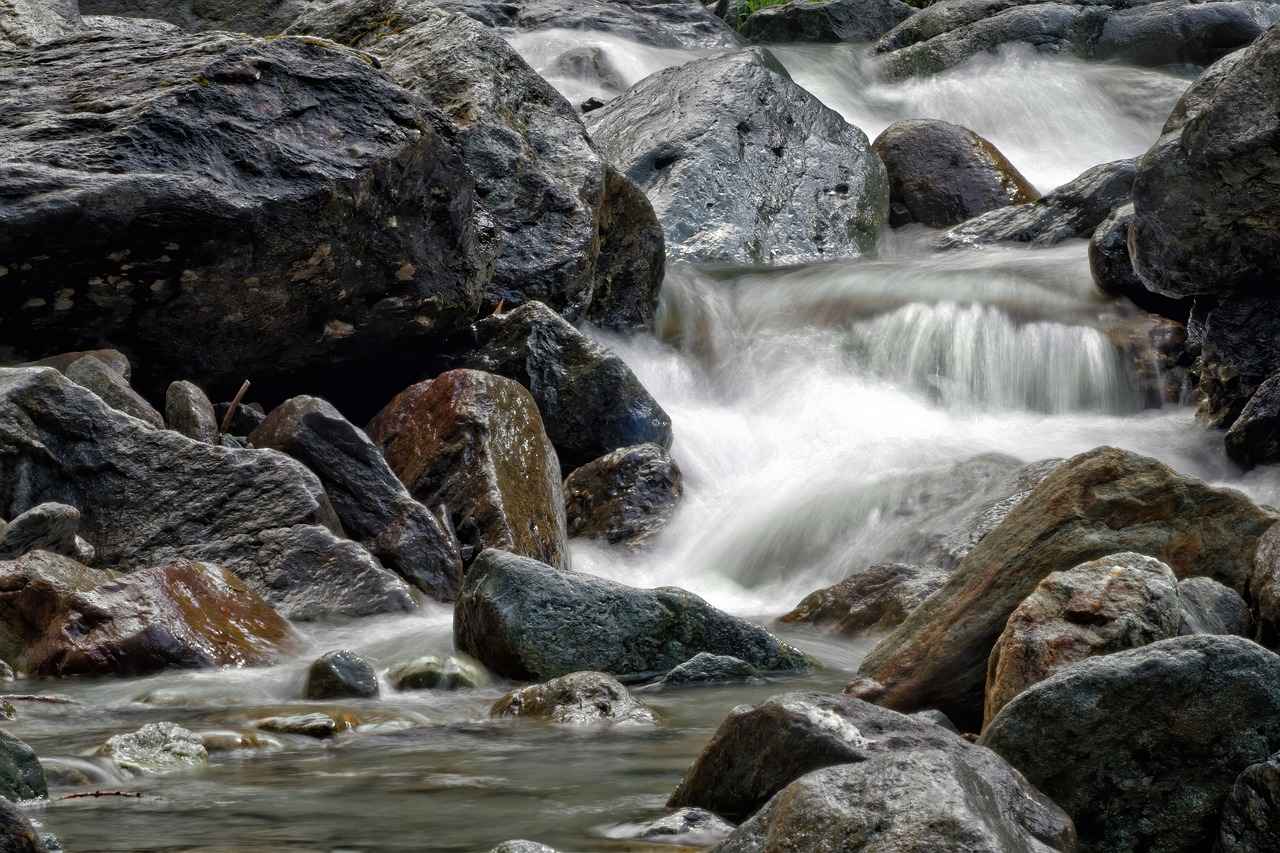
Factors Influencing Boiling Time
The process of boiling water is influenced by several critical factors that can significantly affect the time it takes for water to reach its boiling point. Understanding these variables is essential for anyone looking to optimize their cooking techniques or simply satisfy their curiosity about the science of boiling. Below, we explore the key factors that contribute to boiling time.
- Altitude
- Material of the Pot
- Heat Source
- Water Quantity
- Initial Water Temperature
One of the most significant factors influencing boiling time is altitude. At higher elevations, the atmospheric pressure decreases, which in turn lowers the boiling point of water. For instance, while water boils at 100°C (212°F) at sea level, it may boil at around 95°C (203°F) at an altitude of 1,500 meters (4,921 feet). This reduction in boiling point can lead to longer cooking times for foods that require boiling, such as pasta or eggs. Consequently, cooks in high-altitude regions often need to adjust their cooking times and methods to achieve the desired results.
The material of the pot used for boiling water also plays a crucial role in how quickly water heats up. Different materials have varying thermal conductivities, which affects how efficiently they transfer heat. For example:
| Pot Material | Thermal Conductivity | Boiling Efficiency |
|---|---|---|
| Stainless Steel | Moderate | Slower heating |
| Copper | High | Faster heating |
| Aluminum | High | Faster heating |
Copper and aluminum pots, due to their high thermal conductivity, can heat water more quickly than stainless steel pots. Thus, selecting the right pot material can significantly impact boiling times.
The heat source used to boil water is another vital factor. Different heat sources, such as gas, electric, or induction, have varying efficiencies and heat outputs. For instance, gas stoves typically provide immediate and adjustable heat, allowing for quick boiling. In contrast, electric stoves may take longer to heat up and may not provide as much control over the temperature. Induction cooktops, on the other hand, can heat pots and pans rapidly by directly transferring energy to the cookware, often resulting in faster boiling times compared to traditional electric stoves.
The amount of water being heated also affects boiling time. More water requires more energy to reach the boiling point, which can significantly increase the time needed for boiling. For instance, a small pot with just a cup of water will boil much faster than a large pot filled with several liters of water. Therefore, it’s essential to consider the quantity of water when planning to boil.
Lastly, the initial temperature of the water is a factor that cannot be overlooked. Water that starts at a higher temperature, such as hot tap water, will naturally reach its boiling point faster than cold water. However, this does not mean that using hot water will always result in quicker boiling, as the other factors discussed can also play a role.
In summary, understanding the various factors influencing boiling time—such as altitude, pot material, heat source, water quantity, and initial temperature—can greatly enhance your cooking efficiency. By considering these elements, you can optimize your boiling techniques and achieve better results in the kitchen.
Altitude and Its Impact on Boiling
When discussing the dynamics of boiling water, one critical factor to consider is altitude. As altitude increases, the atmospheric pressure decreases, which significantly influences the boiling point of water. This section delves into how altitude affects boiling times and the implications for cooking.
At sea level, water boils at a temperature of 100 degrees Celsius (212 degrees Fahrenheit). However, as you ascend to higher altitudes, the boiling point drops. For instance, at an altitude of 2,000 meters (about 6,561 feet), water boils at approximately 93.4 degrees Celsius (200.1 degrees Fahrenheit). This phenomenon occurs because the lower pressure at higher elevations allows water molecules to escape into the vapor phase more easily, requiring less heat energy to reach the boiling point.
The implications of this drop in boiling point are significant for cooking. Cooking times can be altered when boiling water at high altitudes, affecting not only the preparation of pasta but also other dishes that rely on precise cooking temperatures. For example, pasta cooked at higher elevations may require longer boiling times to achieve the desired texture, as the water is not as hot as it would be at sea level.
Moreover, when baking, the lower boiling point can impact the consistency of certain recipes, particularly those involving meringues or soufflés. The reduced pressure can cause these delicate dishes to collapse if not adjusted for altitude. Therefore, it is crucial for cooks and bakers in high-altitude areas to adapt their recipes, often requiring an increase in cooking times or modifications in ingredient proportions.
To further illustrate the impact of altitude on boiling, consider the following table:
| Altitude (meters) | Boiling Point of Water (°C) |
|---|---|
| 0 | 100 |
| 1,000 | 96.0 |
| 2,000 | 93.4 |
| 3,000 | 90.0 |
| 4,000 | 86.5 |
In addition to cooking, the effects of altitude on boiling water also have implications for brewing coffee and tea. At higher elevations, the water’s lower boiling point can lead to under-extraction of flavors, resulting in a less satisfying beverage. Therefore, coffee enthusiasts and tea drinkers may need to experiment with brewing times and temperatures to achieve optimal results.
In summary, understanding the relationship between altitude and boiling points is essential for anyone who enjoys cooking or baking. By recognizing how atmospheric pressure influences boiling times, cooks can make informed adjustments to their techniques, ensuring delicious results regardless of altitude.
Material of the Pot
The plays a crucial role in the efficiency of boiling water. Different materials possess unique properties that significantly affect heat conduction, which in turn influences boiling times. In this section, we will explore how various pot materials, such as stainless steel, copper, and others, impact the boiling process.
Stainless Steel pots are among the most commonly used cookware in kitchens worldwide. They are known for their durability and resistance to rust and corrosion. However, stainless steel is not the best conductor of heat. It typically requires a higher heat source to achieve boiling, which can lead to longer boiling times compared to other materials. To enhance heat conduction, many stainless steel pots feature a core made of copper or aluminum.
Copper pots, on the other hand, are renowned for their exceptional heat conductivity. Copper heats up quickly and distributes heat evenly across the surface, allowing water to reach its boiling point much faster than in stainless steel pots. This property makes copper an excellent choice for tasks requiring precise temperature control, such as making sauces or boiling water for pasta.
Aluminum is another popular material used in cookware. It is lightweight and conducts heat efficiently, similar to copper. However, aluminum pots can react with acidic foods, which may alter the flavor of the dish. Anodized aluminum pots can mitigate this issue, providing a non-reactive surface while maintaining excellent heat conduction.
In addition to the material, the thickness of the pot also matters. Thicker pots tend to retain heat better, which can be beneficial when maintaining a rolling boil. However, they may also take longer to heat up initially. Conversely, thinner pots heat quickly but may not distribute heat as evenly, leading to hotspots.
Furthermore, the shape and size of the pot can affect boiling efficiency. A wider pot allows for a larger surface area, enabling more water to evaporate and heat up faster. Conversely, a tall and narrow pot may take longer to boil due to the limited surface area exposed to heat.
When considering the best pot for boiling water, it is essential to weigh these factors carefully. While copper and aluminum pots may offer faster boiling times, they may not be suitable for all cooking tasks. Stainless steel pots, while slower to heat, provide durability and versatility.
In summary, the material of the pot is a significant factor in boiling efficiency. Understanding the properties of different materials can help you make informed choices in the kitchen, ultimately leading to better cooking results.
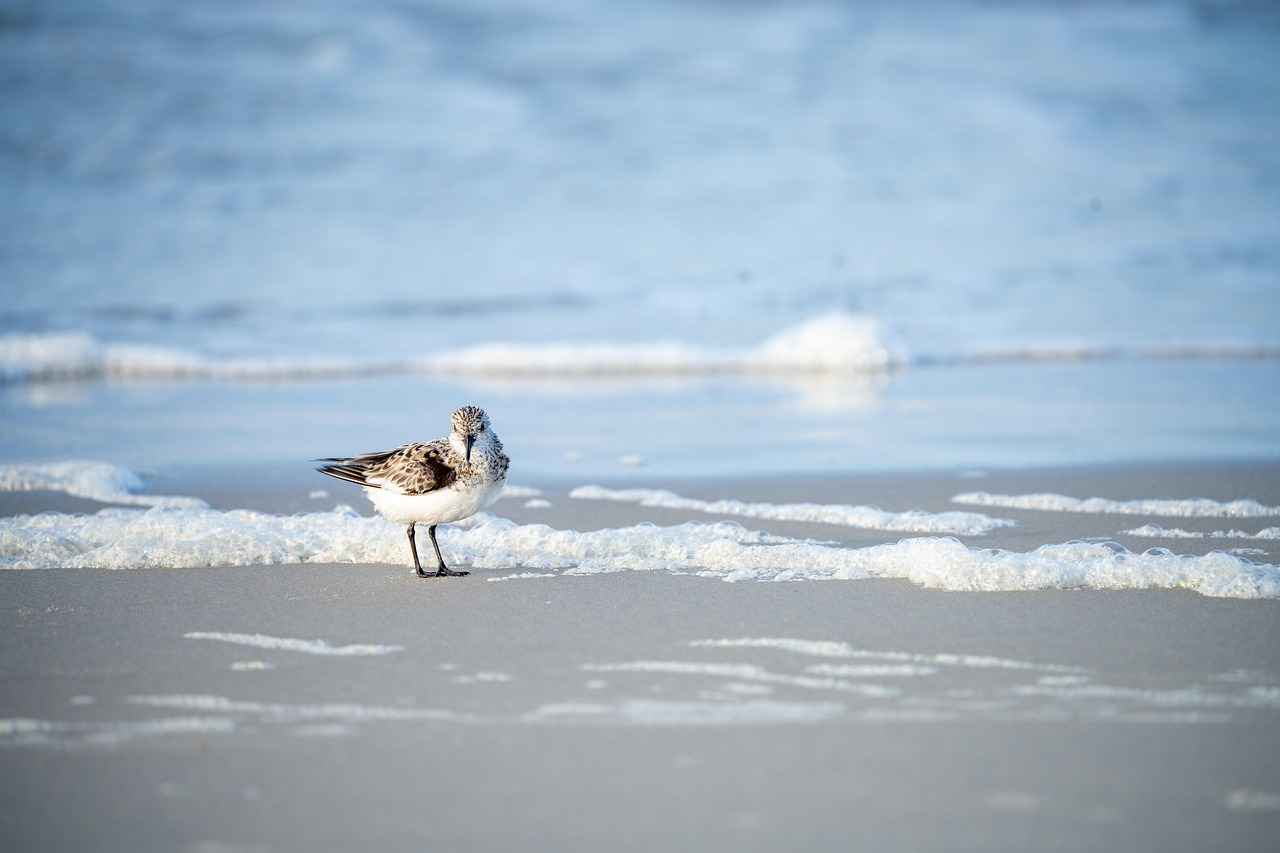
Common Misconceptions About Boiling Water
often lead to confusion in both culinary practices and scientific understanding. This section aims to clarify these misconceptions, providing accurate information to help you grasp the reality of boiling water.
One prevalent myth is that hot water always boils faster than cold water. While it seems logical that water already at a higher temperature would reach its boiling point more quickly, the reality is more nuanced. The boiling point of water is determined by several factors including atmospheric pressure and the heat source’s efficiency. In some cases, cold water can boil faster due to these variables. For instance, if you use a pot with a wide base and a high heat output, cold water may reach a boil quicker than hot water in a poorly conducting pot.
Another common misconception is that cold water takes longer to boil compared to hot water in all situations. This belief overlooks the influence of external factors such as altitude and pot material. At higher altitudes, where atmospheric pressure is lower, water boils at a lower temperature. Therefore, the time it takes for water to reach its boiling point can vary significantly based on where you are cooking. Additionally, the material of the pot can greatly affect heat conduction. For example, a copper pot transfers heat more efficiently than a ceramic one, potentially leading to quicker boiling times regardless of the initial temperature of the water.
Furthermore, there is a widespread notion that adding salt to water will make it boil faster. This is partially true; while salt increases the boiling point of water (a phenomenon known as boiling point elevation), it can also increase the time it takes to reach that boiling point due to the additional heat required to dissolve the salt. Thus, while salt can enhance the flavor of boiling water, it does not necessarily speed up the boiling process.
Another myth is that covering a pot will not affect boiling time. In reality, covering a pot traps heat and steam, which can significantly reduce the time it takes for water to boil. By retaining heat, the pot reaches its boiling point more quickly, making it a practical tip for efficient cooking.
Lastly, many people believe that the size of the pot does not matter when boiling water. However, the surface area exposed to heat plays a crucial role. A larger pot with a greater surface area can allow for faster heat transfer, while a smaller pot may take longer to reach boiling. Additionally, the quantity of water in the pot also affects boiling time; more water requires more heat and time to reach a boil.
In summary, understanding the is essential for both culinary success and scientific literacy. By debunking these myths, we can approach cooking with a more informed perspective, leading to better results in the kitchen and a clearer understanding of the science behind boiling.
Myth: Hot Water Always Boils Faster
The belief that hot water will always boil faster than cold water is a common misconception that has been perpetuated over time. This notion might seem intuitive; after all, if water is already heated, it stands to reason that it would take less time to reach its boiling point. However, the reality is more complex and is influenced by several scientific factors.
To understand why hot water does not invariably boil faster than cold, we must first consider the boiling process. Boiling occurs when a liquid reaches its boiling point, where the vapor pressure equals the atmospheric pressure. The temperature at which this happens is influenced by environmental factors such as altitude and the material of the pot being used.
| Factor | Impact on Boiling |
|---|---|
| Altitude | Higher altitudes decrease atmospheric pressure, lowering boiling points. |
| Pot Material | Different materials conduct heat differently, affecting boiling efficiency. |
Another important aspect to consider is the heat transfer efficiency of the pot. For instance, pots made of copper heat up faster than those made of stainless steel, which can affect how quickly the water reaches boiling. Therefore, even if hot water starts at a higher temperature, the type of pot and the heat source can significantly alter the boiling time.
Additionally, the Mpemba effect introduces another layer of complexity to this myth. This phenomenon suggests that, under certain conditions, hot water can freeze faster than cold water. While this does not directly relate to boiling, it highlights the counterintuitive nature of thermal dynamics. The Mpemba effect raises questions about the behavior of water at different temperatures and the factors that influence these behaviors.
Moreover, the idea that hot water boils faster can also be misleading due to the heat loss that occurs when transferring water from one container to another. If hot water is poured into a pot that is not adequately preheated or if it is exposed to a colder environment, it may lose heat more rapidly than anticipated, resulting in a longer boiling time.
In practical terms, cooks should not rely solely on the temperature of the water to determine boiling efficiency. Instead, they should consider the overall cooking environment, including the heat source and pot material. For example, using a lid can trap heat and reduce boiling time, regardless of whether the water started hot or cold.
In summary, while it may seem logical that hot water would always boil faster than cold, a variety of factors influence the actual boiling time. Understanding these nuances can help dispel this myth and improve cooking efficiency. By focusing on the characteristics of the cooking environment and the materials used, cooks can achieve better results in their culinary endeavors.
Myth: Cold Water Takes Longer to Boil
When it comes to the kitchen, many cooks are guided by the belief that cold water takes longer to boil than hot water. While this is often true, it is essential to explore the nuances that can lead to exceptions in specific scenarios. Understanding the science behind boiling water is vital for anyone looking to optimize their cooking process.
The boiling point of water is influenced by several factors, and it is crucial to recognize that the temperature of the water is just one of them. For instance, the material of the pot used can significantly affect boiling times. A copper pot conducts heat better than a stainless steel pot, which can lead to faster boiling times, regardless of whether the water starts cold or hot. This means that if you have a cold water-filled copper pot on a high heat source, it might boil faster than hot water in a less conductive pot.
Another factor to consider is the heat source. The intensity and type of heat applied can alter how quickly water reaches its boiling point. For instance, if you are using a high-powered induction stove, it might heat cold water more quickly than a lower-powered gas stove heating hot water. Therefore, the heat source plays a critical role in the boiling process.
Furthermore, environmental conditions such as altitude can also affect boiling times. At higher altitudes, atmospheric pressure decreases, which lowers the boiling point of water. In such cases, cold water might actually boil faster than hot water because it requires less energy to reach its boiling point in a low-pressure environment. This is an important consideration for those cooking in mountainous regions.
Additionally, the Mpemba effect introduces another layer of complexity to this discussion. This phenomenon suggests that, under certain conditions, hot water can freeze faster than cold water. While this primarily pertains to freezing, it highlights how temperature and environmental factors can lead to unexpected outcomes in thermal dynamics.
There’s also the evaporation factor to consider. When hot water is heated, it loses some of its mass due to evaporation. This loss can mean that there is less water to boil, potentially leading to a quicker boiling time in certain contexts. In contrast, cold water, which may not evaporate as rapidly, retains its mass and may take longer to heat up to a boil.
In summary, while the common belief that cold water takes longer to boil holds true in many situations, it is not an absolute rule. The type of pot, heat source, altitude, and even the effects of evaporation all play significant roles in the boiling process. By understanding these factors, cooks can make informed decisions that enhance their culinary efficiency. So, the next time you find yourself in the kitchen, consider these variables before assuming that cold water will always take longer to boil.
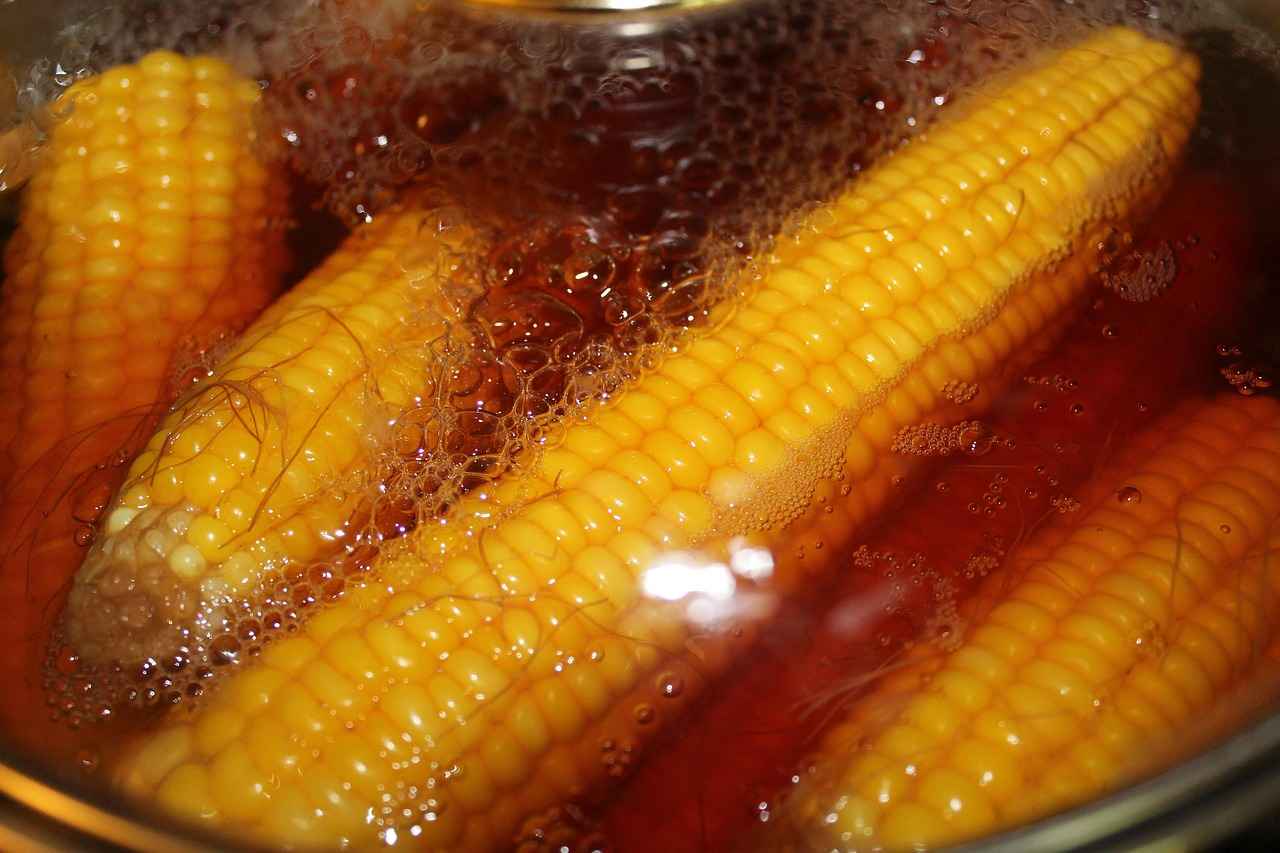
Practical Applications in Cooking
Understanding boiling times can significantly enhance cooking efficiency, making it an essential skill for both novice and experienced cooks alike. By grasping the principles behind boiling water, you can optimize your cooking processes and achieve better results. This section offers practical tips for cooks on how to utilize this knowledge in everyday kitchen scenarios.
- Choose the Right Pot: The material of your pot can greatly affect boiling times. For instance, copper pots conduct heat better than stainless steel, allowing water to reach its boiling point more quickly.
- Use a Lid: Covering your pot with a lid traps heat and steam, which can significantly reduce the time it takes for water to boil. This simple step can save you precious minutes in the kitchen.
- Start with Hot Water: Using hot tap water instead of cold can speed up the boiling process, but be cautious; this is not always a guarantee. Factors like pot material and stove efficiency also play a role.
- Optimal Water Quantity: Only boil the amount of water you need. A larger volume of water takes longer to heat up, so adjust your measurements based on your recipe requirements.
- Stove Settings: Utilize the highest heat setting initially to bring water to a boil quickly, then adjust the heat to maintain a steady boil as needed for your cooking.
Understanding how to boil water effectively can enhance various cooking methods. Here are a few techniques that rely heavily on boiling:
- Pasta Preparation: Boiling water is essential for cooking pasta. Knowing the right boiling time ensures that your pasta is cooked to perfection, avoiding mushiness or undercooking.
- Blanching Vegetables: This technique requires rapidly boiling water to preserve the color and nutrients of vegetables. Quick blanching followed by an ice bath stops the cooking process, enhancing texture and flavor.
- Making Broths and Stocks: Starting with boiling water helps extract flavors from ingredients more effectively, leading to richer and more flavorful broths.
- Steaming: While steaming involves boiling water, understanding the timing and temperature can help you achieve the ideal texture for vegetables and other foods.
By incorporating these practices into your cooking routine, you can maximize efficiency and improve the quality of your dishes. Remember, the key to mastering boiling times lies not only in understanding the science but also in applying this knowledge practically in your kitchen.
Best Practices for Boiling Water
Boiling water is a fundamental task in the kitchen, yet many people overlook the nuances that can significantly enhance efficiency. Understanding the best practices for boiling water is essential not only for cooking but also for saving time and energy. Here are some effective techniques to ensure you achieve the fastest boiling time possible.
- Choose the Right Pot: The material and shape of your pot play a crucial role in boiling efficiency. Stainless steel and copper pots are excellent conductors of heat, allowing water to reach its boiling point faster. Additionally, a pot with a wider base provides more surface area for heat transfer, which can expedite the boiling process.
- Use a Lid: Covering your pot with a lid traps heat and steam, significantly speeding up the boiling process. This simple step can reduce the time it takes for water to reach a rolling boil.
- Optimize Stove Settings: Adjusting your stove to the highest setting is an obvious choice, but consider using a high-output burner if available. These burners deliver more heat, which can dramatically reduce boiling time.
- Water Quantity Matters: Only boil the amount of water you need. A smaller volume will boil faster than a full pot. If you need to boil water for a specific recipe, measure precisely to avoid wasting time and energy.
- Preheat Water: If you have access to hot water from a tap, start with that instead of cold water. This can cut down on the time it takes to reach boiling. However, be cautious about the quality of your tap water and ensure it’s safe for cooking.
- Use Electric Kettles: For those who boil water frequently, investing in an electric kettle can be a game-changer. Electric kettles are designed for rapid boiling and can often bring water to a boil faster than traditional stovetop methods.
By incorporating these best practices into your cooking routine, you can significantly enhance your efficiency in the kitchen. Not only will you save time, but you will also improve your overall cooking experience. Remember, the key to successful boiling lies in understanding the science behind it and applying practical techniques that make the process smoother and quicker.
Cooking Techniques That Benefit from Boiling Knowledge
Cooking is both an art and a science, and understanding the dynamics of boiling water can significantly enhance culinary skills. In this section, we explore various cooking techniques that rely on boiling water, highlighting their importance and offering practical tips for successful execution.
Pasta is a staple in many cuisines, and the key to achieving the perfect texture lies in the boiling process. When cooking pasta, it is crucial to use a large pot with ample water. This ensures that the pasta cooks evenly and prevents it from becoming sticky. Here are some tips:
- Use Plenty of Water: A general rule is to use at least 4-6 quarts of water for every pound of pasta.
- Add Salt: Adding salt to the boiling water enhances the flavor of the pasta. A good guideline is 1-2 tablespoons of salt per gallon of water.
- Don’t Overcrowd: Add pasta gradually to maintain the water’s temperature, ensuring it returns to a boil quickly.
Blanching is a technique used to preserve the color, texture, and nutrients of vegetables. This method involves briefly boiling vegetables and then plunging them into ice water to halt the cooking process. Here’s how to blanch effectively:
- Choose the Right Vegetables: Ideal candidates for blanching include green beans, broccoli, and asparagus.
- Prepare Ice Bath: Fill a bowl with ice and water before you start boiling. This will help stop the cooking process immediately.
- Timing is Key: Blanch vegetables for 1-3 minutes, depending on the type, and then quickly transfer them to the ice bath.
Boiling water is essential for making flavorful stocks and broths. The process involves simmering bones, meat, and vegetables in water for an extended period. Here are some tips to maximize flavor:
- Start Cold: Begin with cold water to extract maximum flavor as it heats up.
- Simmer, Don’t Boil: Once the water reaches a boil, reduce the heat to a simmer to avoid cloudy stock.
- Skim Regularly: Remove impurities that rise to the surface for a clearer broth.
Poaching is a gentle cooking method that involves simmering eggs in water. This technique requires precision to achieve the desired results:
- Add Vinegar: A splash of vinegar helps the egg whites coagulate more quickly, resulting in a neater poached egg.
- Temperature Matters: The water should be just below boiling, around 180-190°F (82-88°C), for optimal poaching.
- Use Fresh Eggs: Fresher eggs hold their shape better when poached.
By mastering these boiling techniques, cooks can elevate their culinary creations. Understanding the dynamics of boiling water not only enhances flavor but also improves the overall presentation and nutritional value of dishes. Whether preparing pasta, blanching vegetables, making stock, or poaching eggs, the principles of boiling are foundational in cooking.
Frequently Asked Questions
- Does hot water boil faster than cold water?
Not necessarily! While it might seem intuitive that hot water would boil faster, various factors like the heat source, pot material, and altitude play significant roles in the boiling process.
- What is the Mpemba effect?
The Mpemba effect is a fascinating phenomenon where hot water can freeze faster than cold water under certain conditions. It’s a topic of debate among scientists, with several theories trying to explain it!
- How does altitude affect boiling time?
At higher altitudes, atmospheric pressure decreases, which lowers the boiling point of water. This means that water will boil at a lower temperature, affecting cooking times and methods!
- Does the type of pot matter when boiling water?
Absolutely! Different materials conduct heat differently. For instance, copper pots heat up quickly compared to stainless steel, which can influence how fast your water boils.
- Are there myths about boiling water?
Yes, there are plenty! One common myth is that hot water always boils faster than cold. Understanding the science behind boiling can help debunk these misconceptions!
- What are some tips for boiling water efficiently?
To boil water quickly, use a pot with a lid, choose the right material, and ensure your heat source is high enough. These simple tricks can save you time in the kitchen!
